

This page was created, since a lot of users ask us about differences between START-PROF and Caesar II. See Overview Video about START-PROF functions.
In START-PROF all pipes, fittings and nodes are objects. Each object has it's properties. For example, you can place bend object into node object. You can place pipe between two node objects.
Wind, Show, Ice, Seismic, Wave Loads
Different Pressure and Temperature Values
Load Case Editor = Operation Mode Editor
Underground (Buried) Piping Analysis
Creep in High Temperature Piping
Pipe Stability (Buckling) Analysis
Material database contain the flag "maximum f=1.2" for materials where it can be applicable.
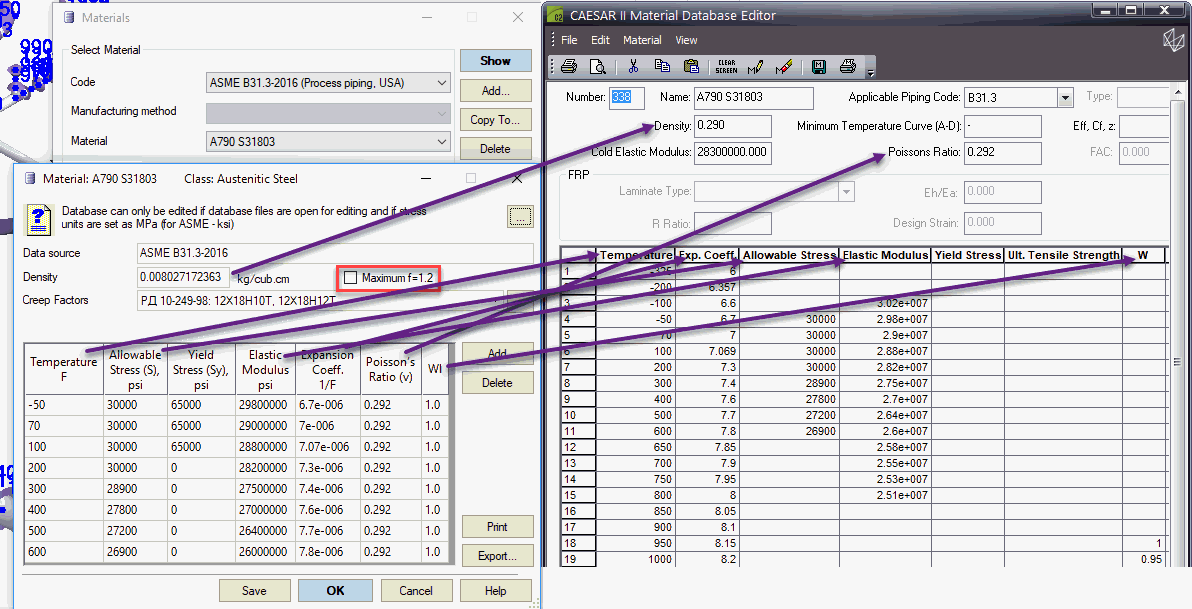
A3 and System design factor calculated automatically where it needed. al() and hl() already multiplied by temperature factor A1 in database. All material properties stored in material database, all pipe and fitting properties stored in pipe and fitting dialog windows.
Database contain all data needed for FRP/GRP/GRE analysis. Just select material and then work like it's a steel piping. See Video about FRP/GRP/GRE stress analysis.
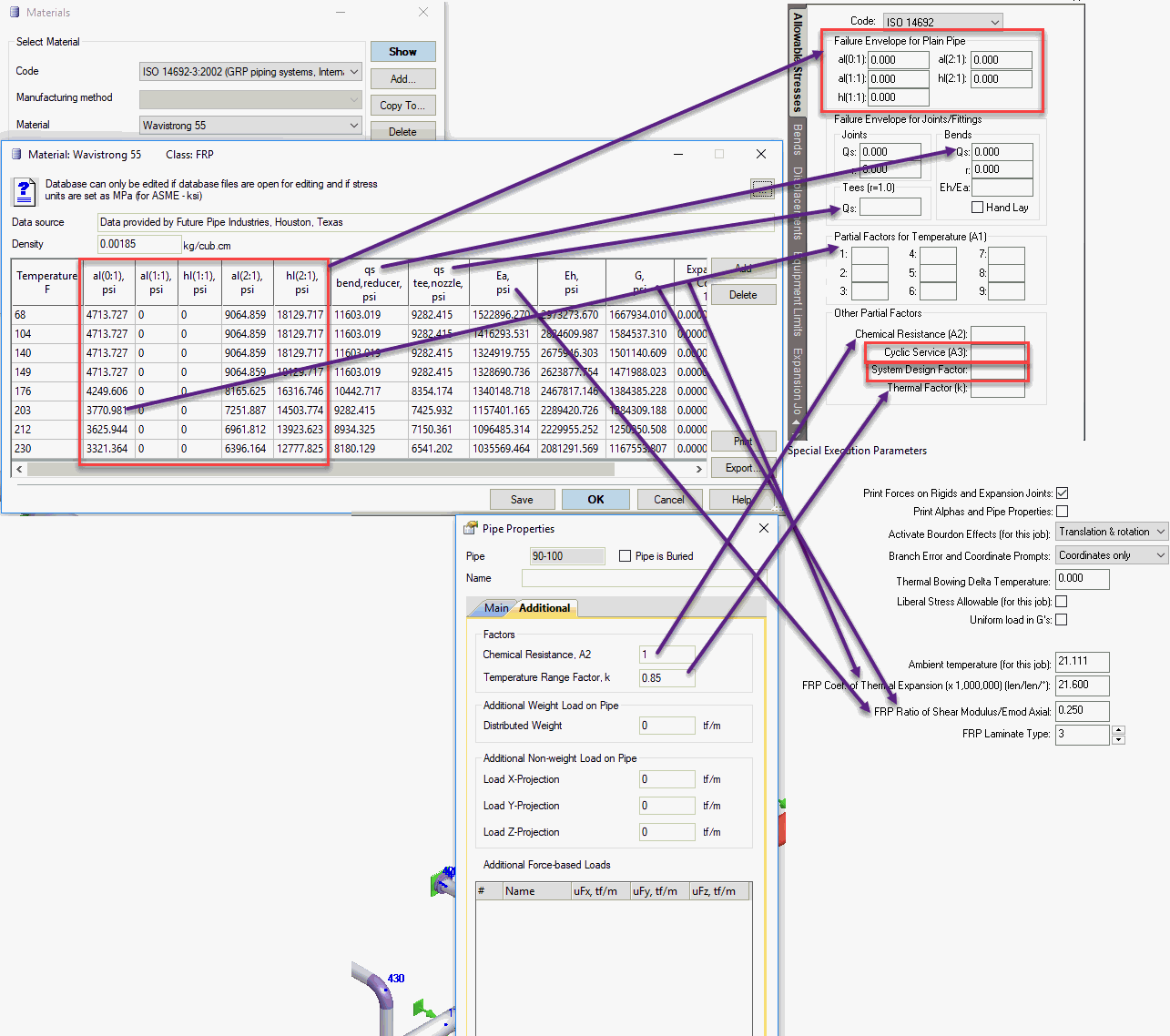
No analog in Caesar II. Database contain all data needed for HDPE piping analysis. Just select material and then work like it's a steel piping. See Video about HDPE piping analysis.
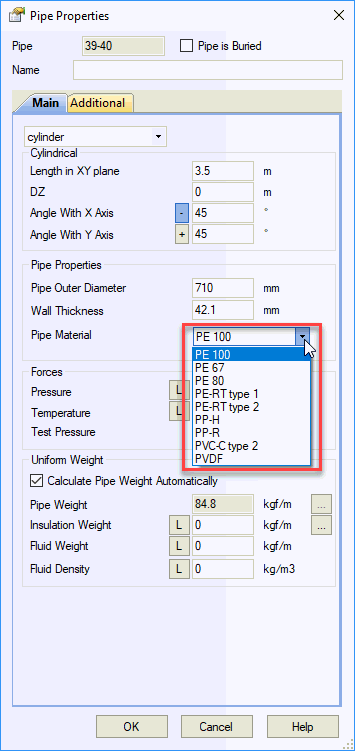
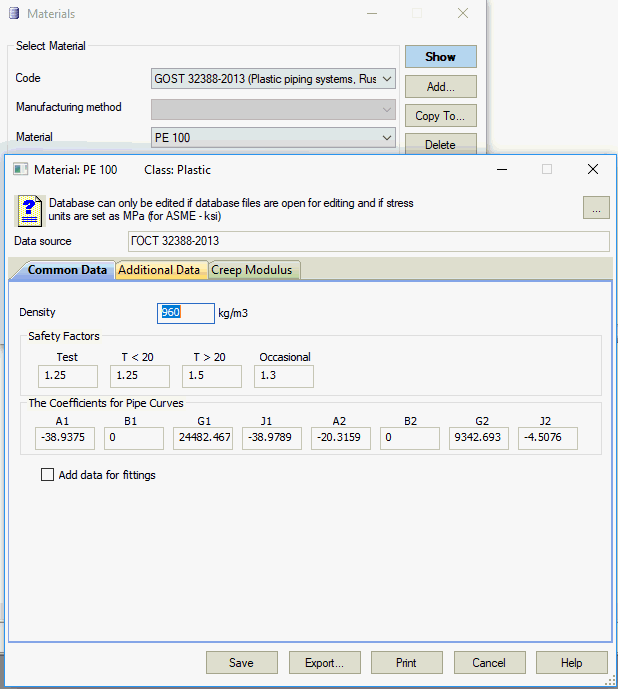
Different temperatures, pressures etc. (see "L" button) can be different in different operation modes. Pipe uniform weight can be calculated depending on material density. Weld quality factors W got from database automatically.
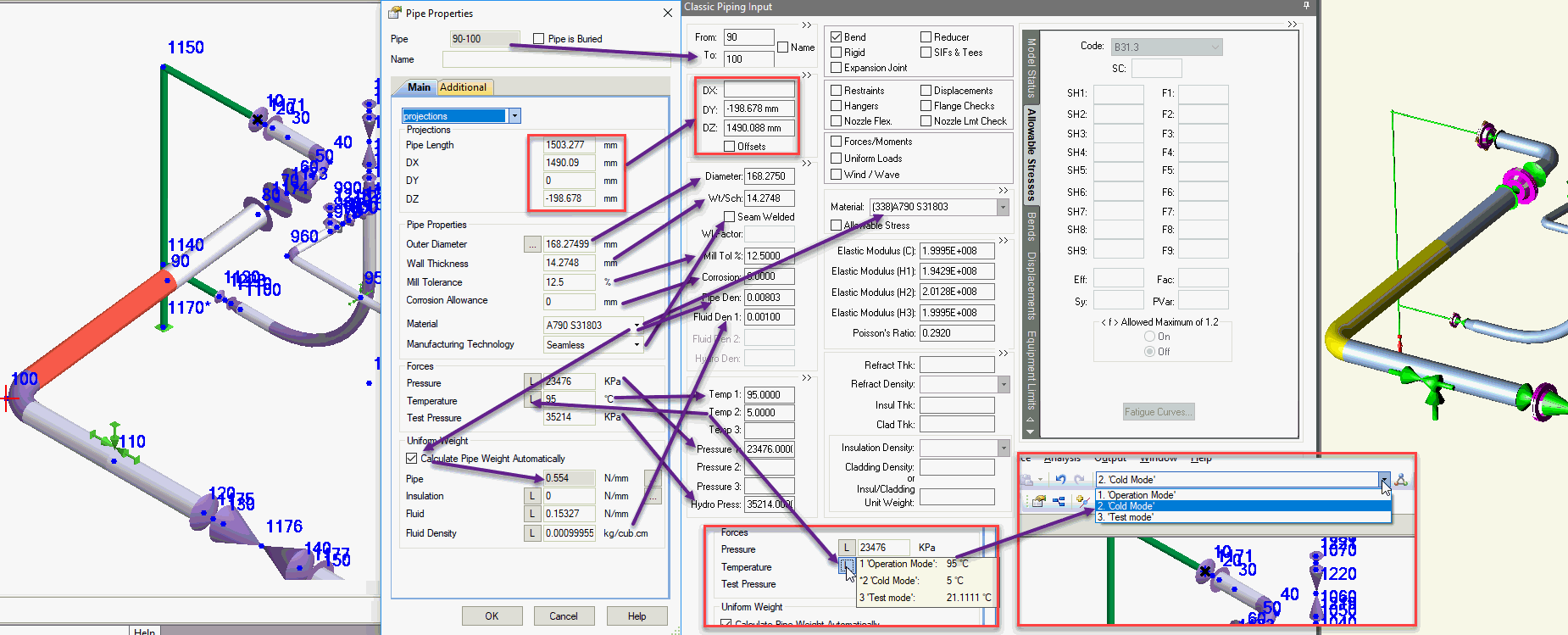
Start consider high pressure for ASME B31.3 Ch.IX automatically (different wall thickness check, occasion load factor k=1.2, different allowable calculation), not just removing liberal stress.
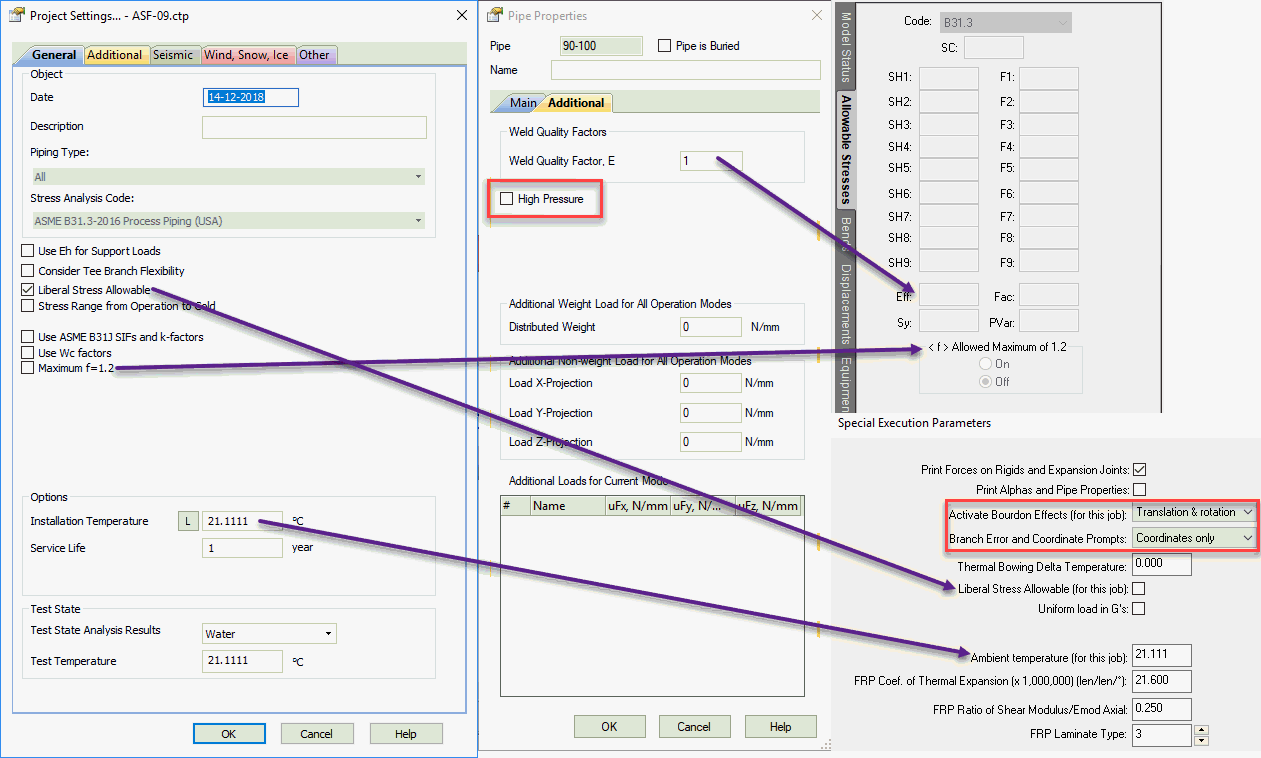
Additional properties of the pipe looks different depending on selected code. Here shown B31.1, B31.4, B31.8, ISO 14692, Thermoplastic Piping:
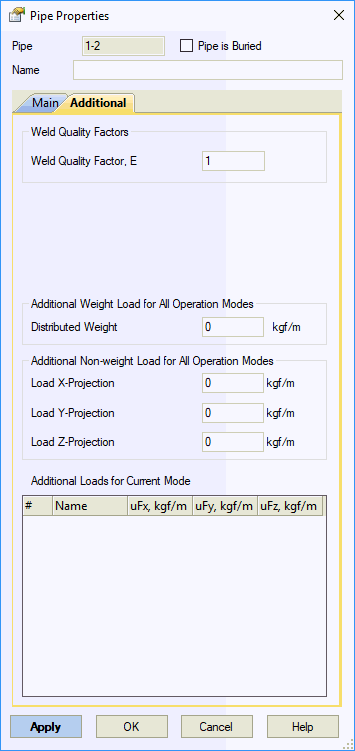
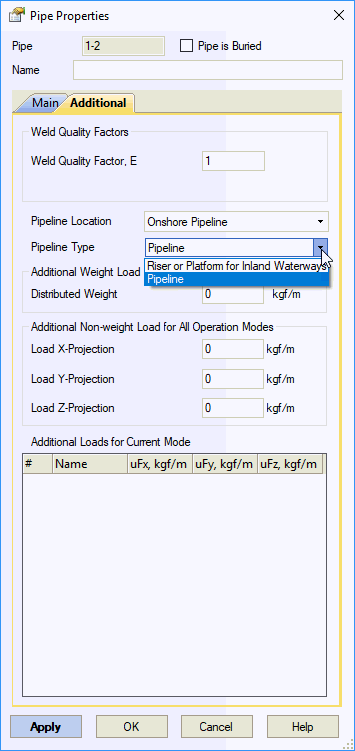
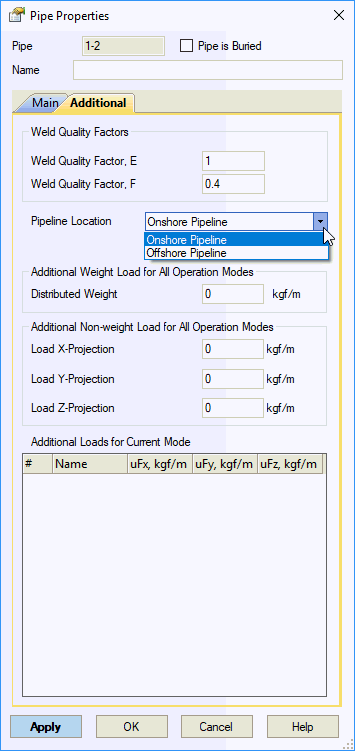
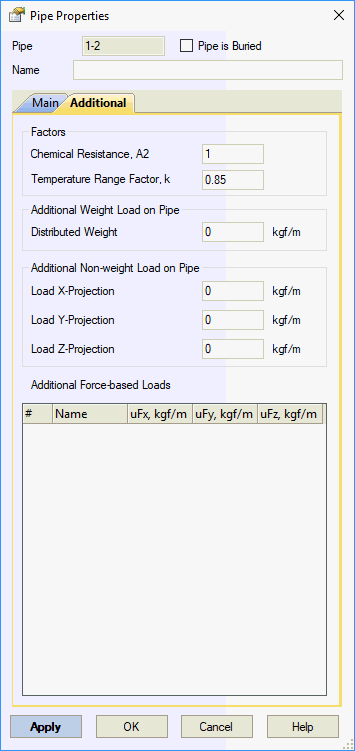
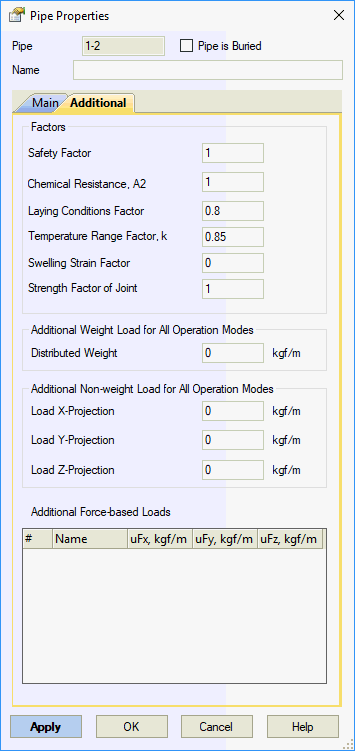
START-PROF shows SIF and k-factors for all fittings (bends, tees, reducers, joints) right in the fitting properties dialog box and in stress table
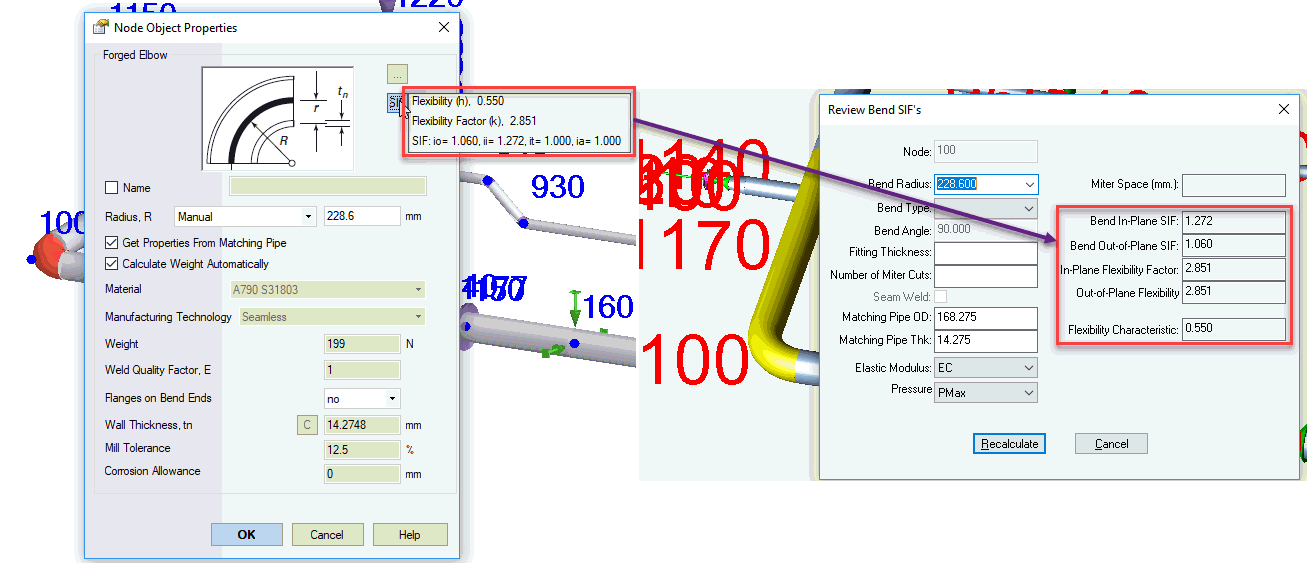

By default all bend properties got from the matching pipe. But you can change it's material, weight, wall thickness etc.
ASME B16.9 and all ASME B31 codes don’t regulate the bend, tee and reducer wall thickness. Only pipe wall thickness is regulated. So many people think that the elbows and other fittings have the same or almost the same wall thickness as the matching pipe. But in the most cases the real bend, tee, reducer body wall thickness is greater than matching pipe wall thickness with the same Schedule.
For elbows the real wall thickness can be 10%-40% greater than matching pipe. Because bends must have greater wall thickness to hold the same pressure as the connected straight pipe.
Manufacturers usually produce the bends with a greater wall thickness than matching pipe, but we can get real bend wall thickness only after contacting manufacturer or even measure it after delivery.
According to the ASME B31 and other ASME B31-based codes bend flexibility factor depends on real bend wall thickness, not on matching pipe wall thickness.
To solve this problem we added the special feature in PASS/START-PROF software that allows calculating the approximate “real” bend wall thickness on-the-fly according to ASME B31.3 304.2.1 and the same requirements in other ASME B31 and EN 13480 codes. Just push the button “C” near the “Wall Thickness” field and it will be calculated according to the code requirements.
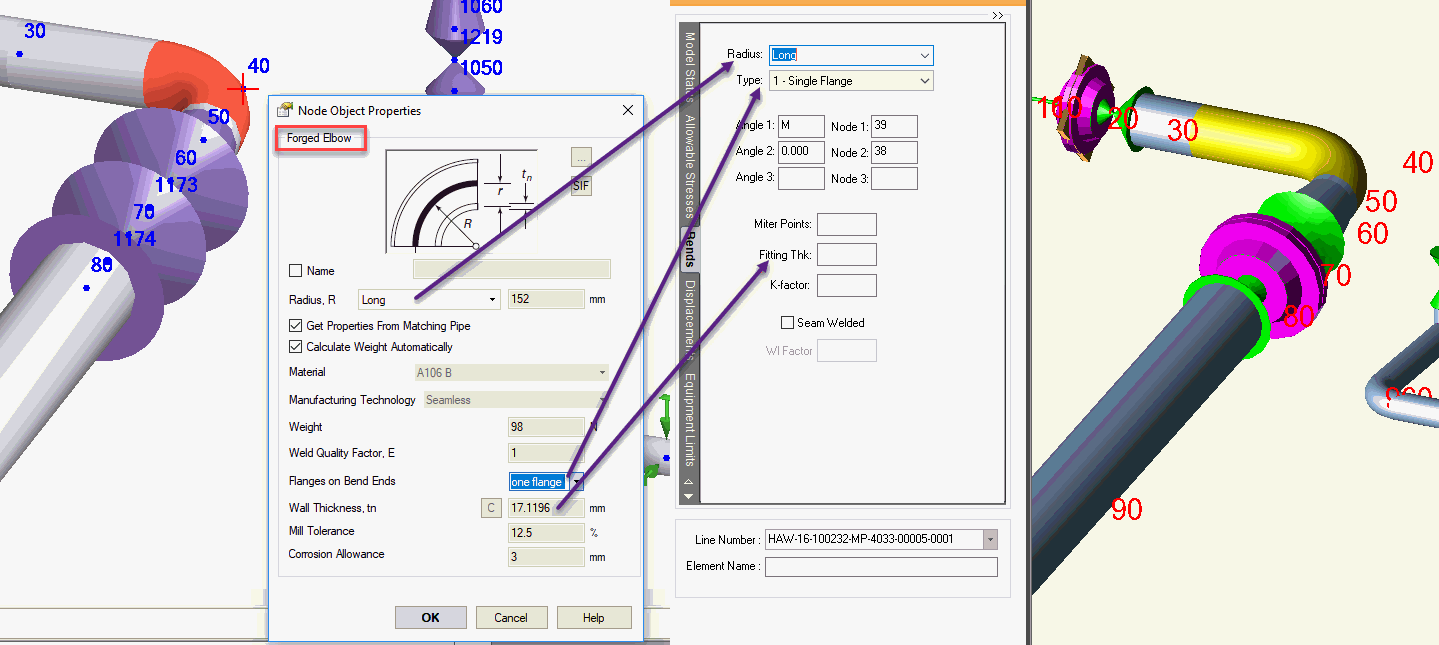
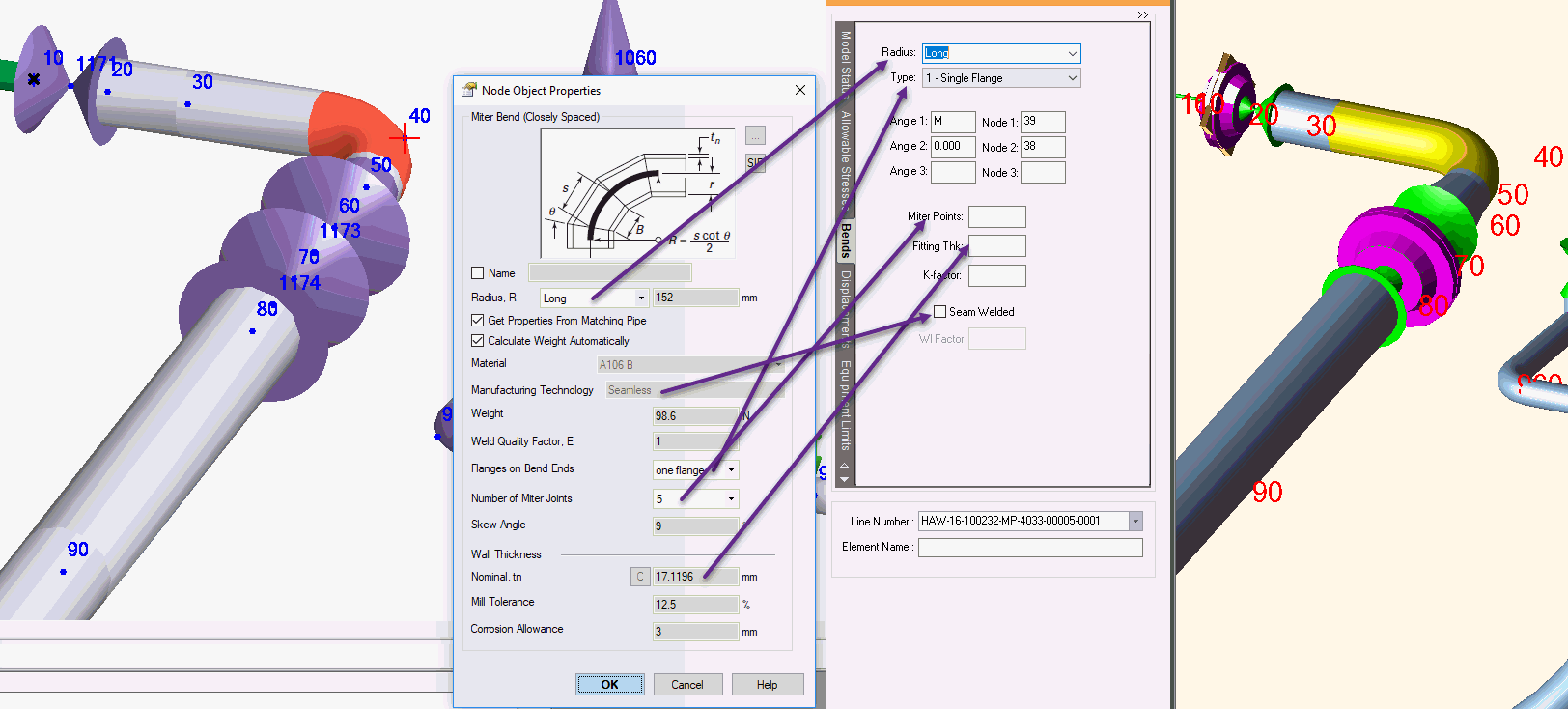
For custom bend user can apply SIF's and k-factors manually.
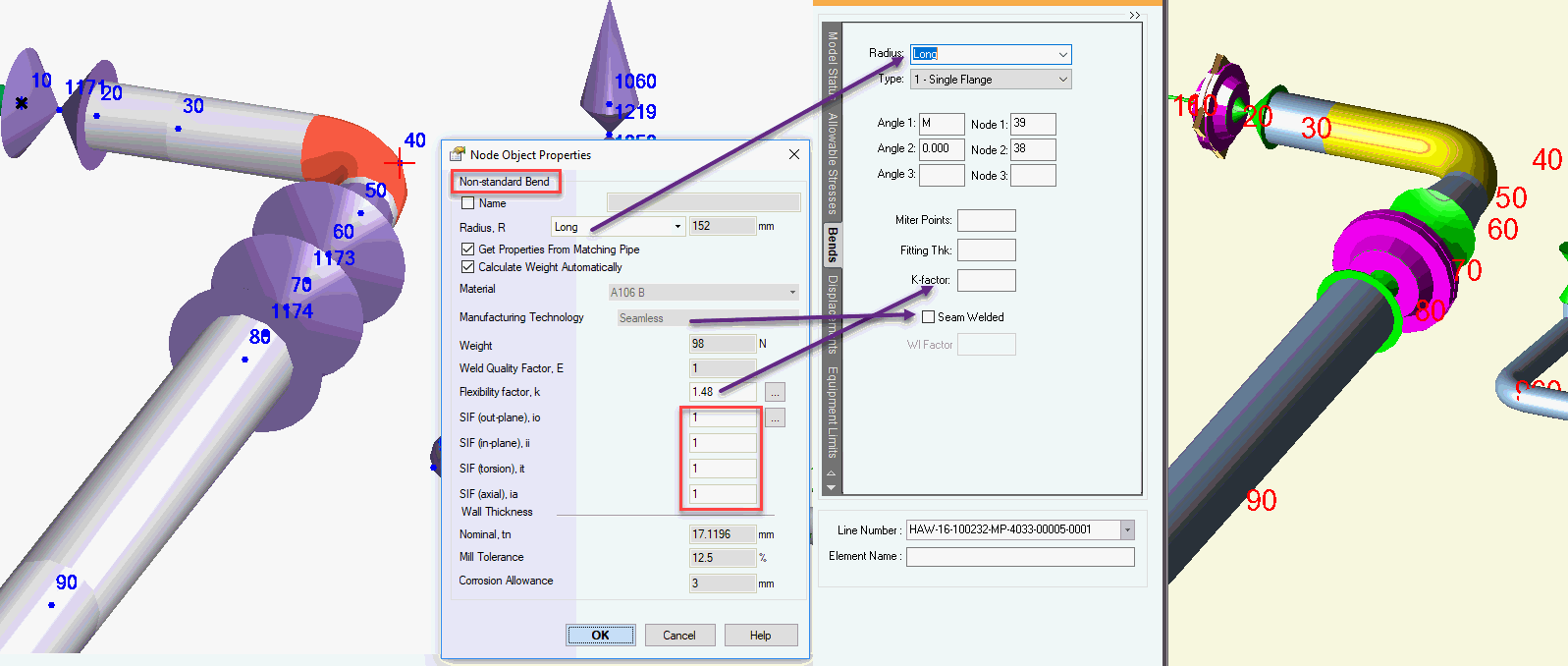
No analog of such elements in Caesar II
Long radius bend - section manufactured through pipe bending using a large radius, usually R>40DN. Does not have initial forces and stresses. Used in long pipelines
Prestressed long radius bend - elastically bent pipe section with a large radius of R>1000DN (natural curve). Unlike a big radius bend, an elastic bend has initial stress. Used in long pipelines
Miter joint (widely spaced miter bend) - single miter joint that is used for modelling the widely spaced miter bends of as standalone element
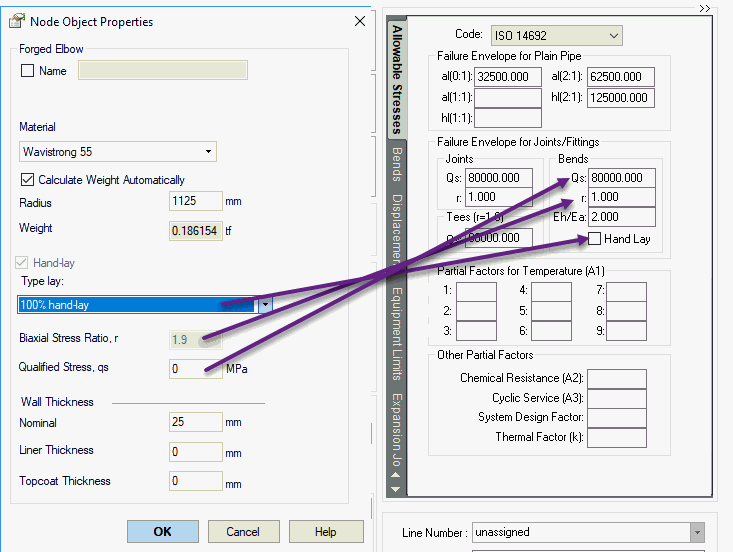
START-PROF tee model is complex and contain internal hidden nodes. The tee run automatically modeled as the pipe with wall thickness that can be greater than connected pipe (tn). That's why START-PROF has "L" and "H" fields. Flexible connections are inserted on the header and branch if needed (if user selected ASME B31J code or ASME BPV SIII div 1 class 1 NB 3686 method). No side software needed to use ASME B31J, it's embedded.
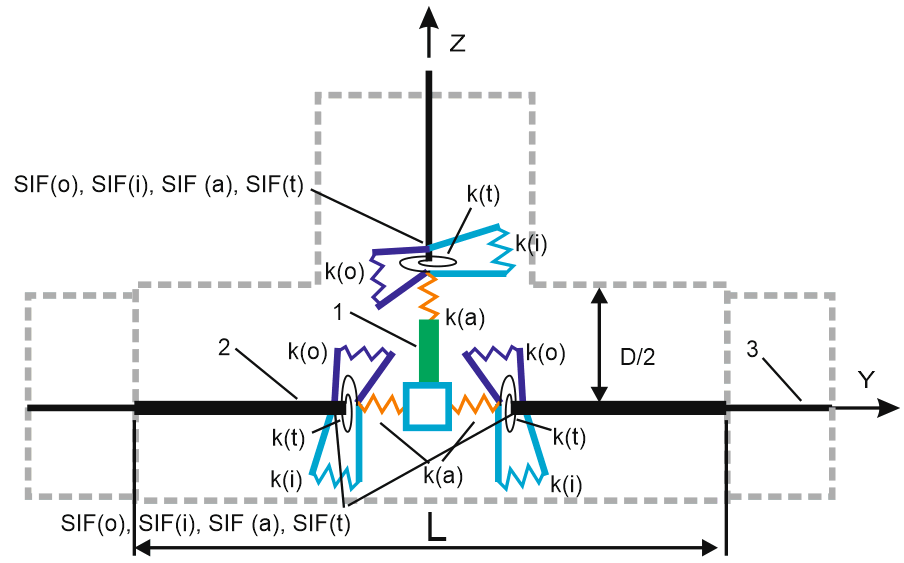
1 - rigid element, 2 - tee header with user specified wall thickness,
3 - pipe connected to tee header with different wall thickness
SIF and k-factors are calculated automatically for all standard tees.
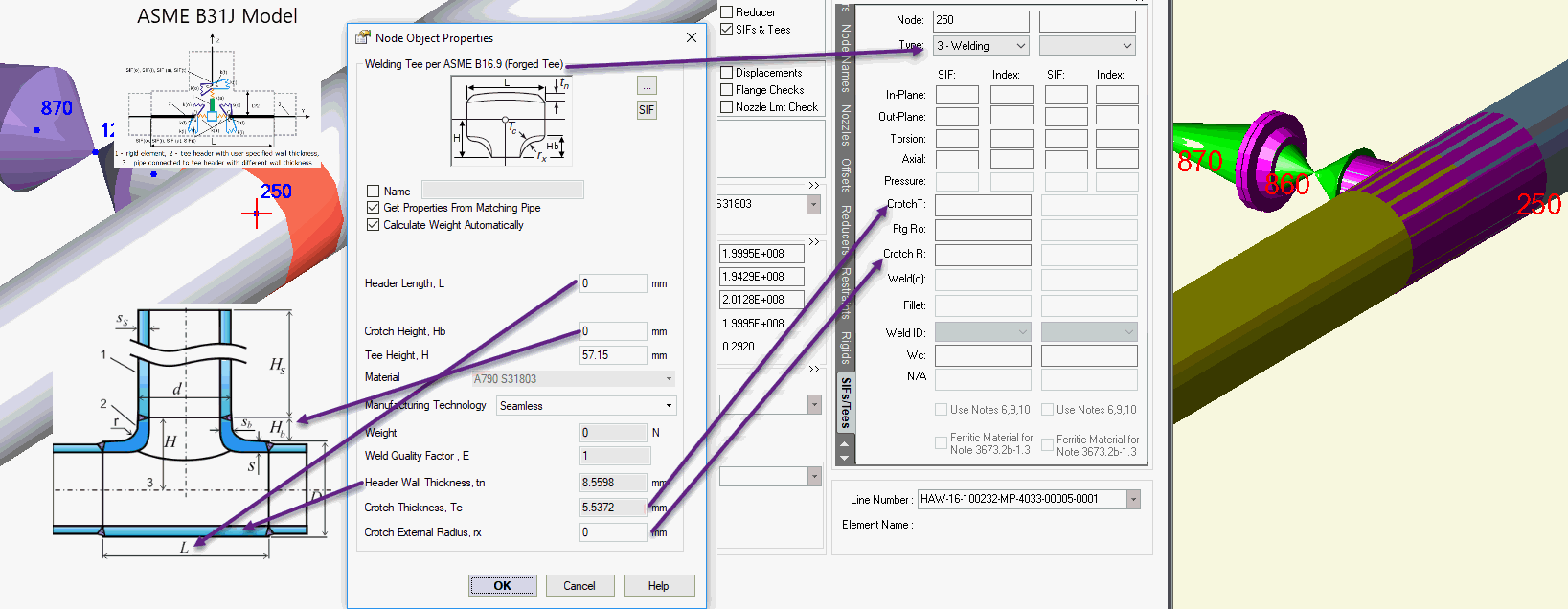
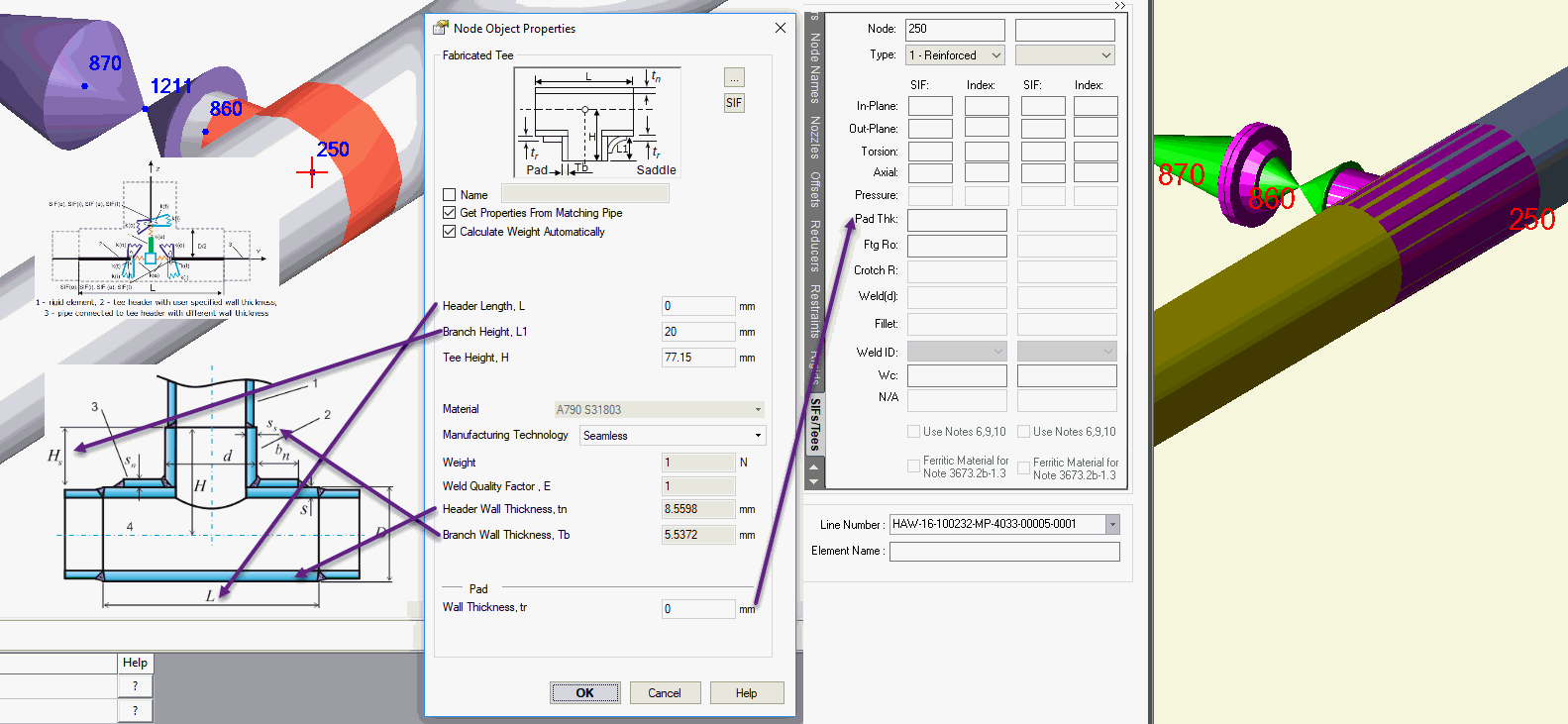
For custom tees user can specify SIF and k-factors for header and branch: out-of-plane, in-plane, torsion, axial.
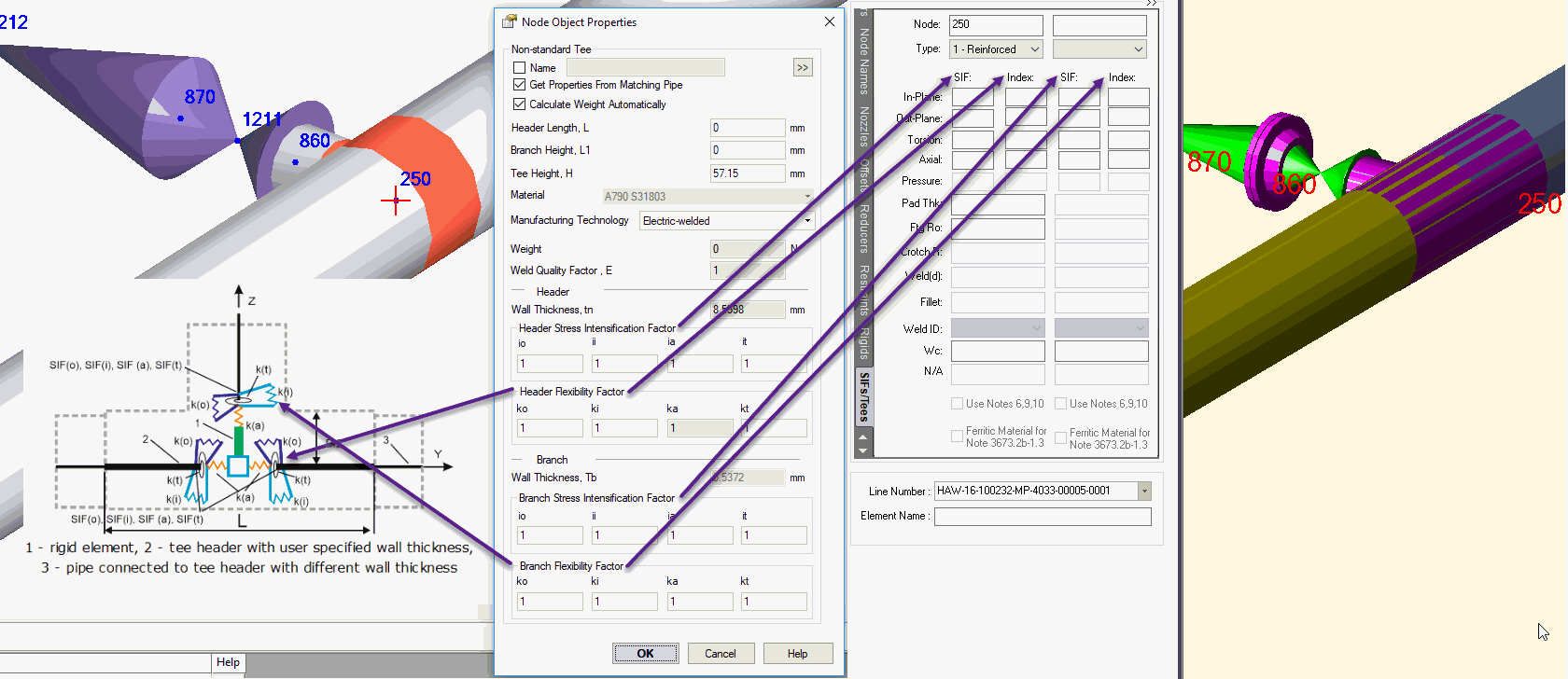
Each type of tee has only that properties that are needed for analysis according to selected code.
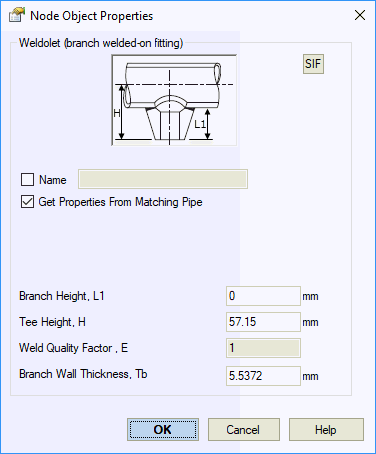
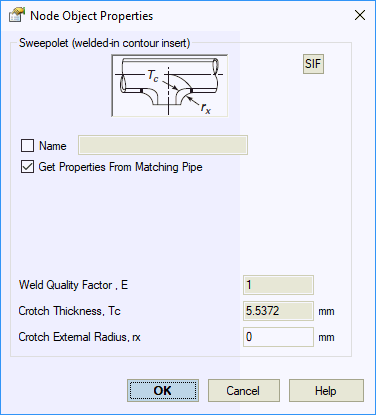
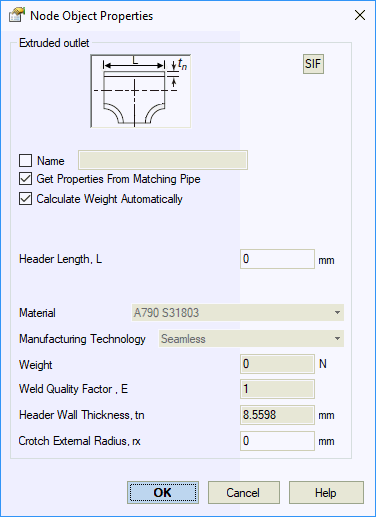
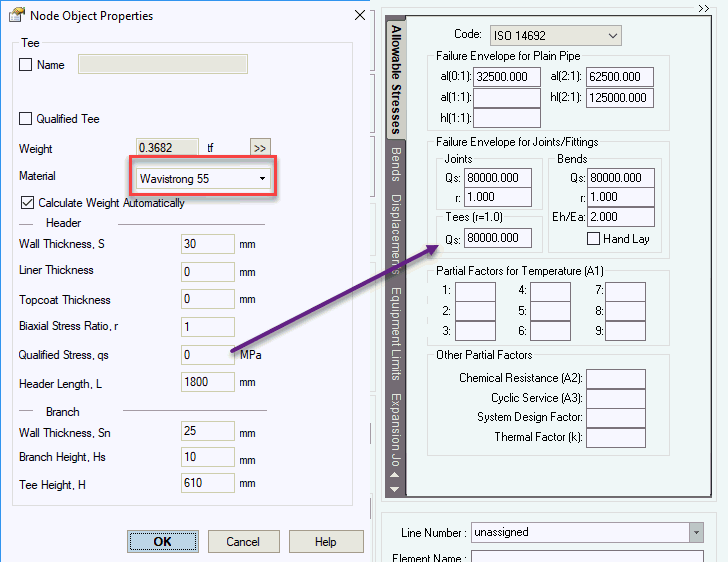
Reducer is a node object, not pipe element. You can delete it and geometry will not be changed.
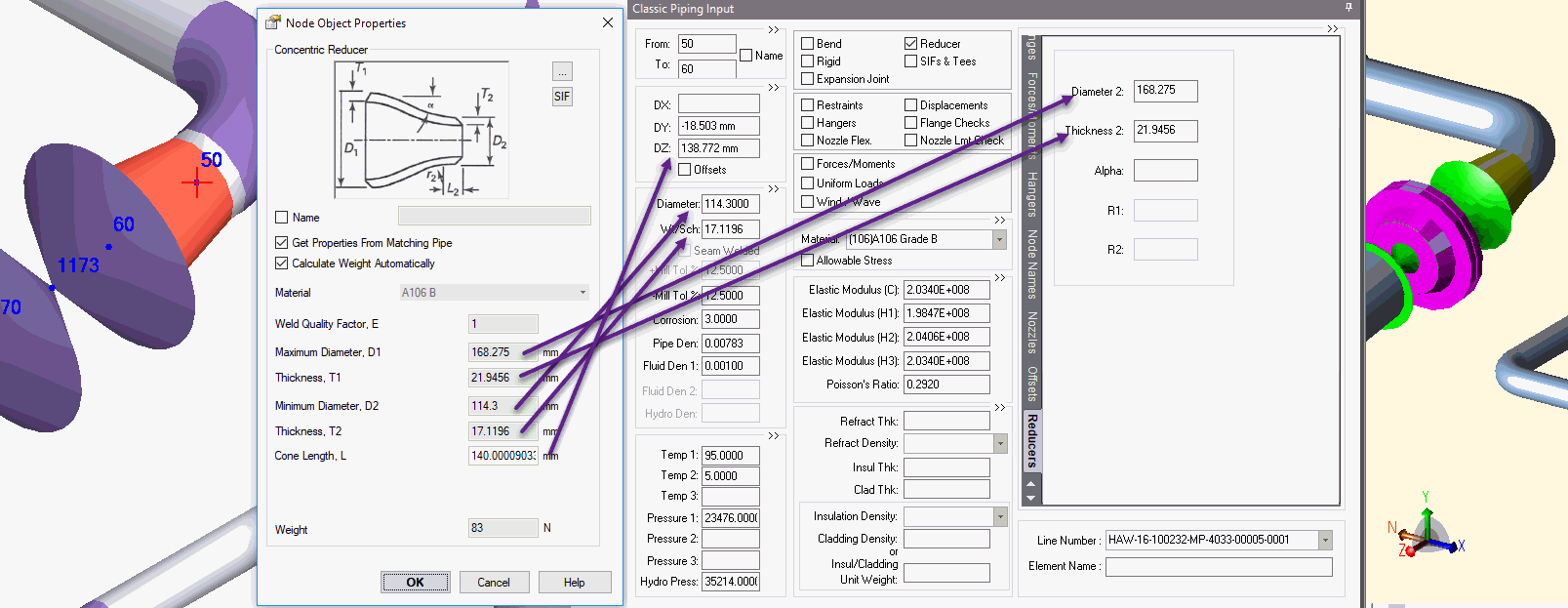
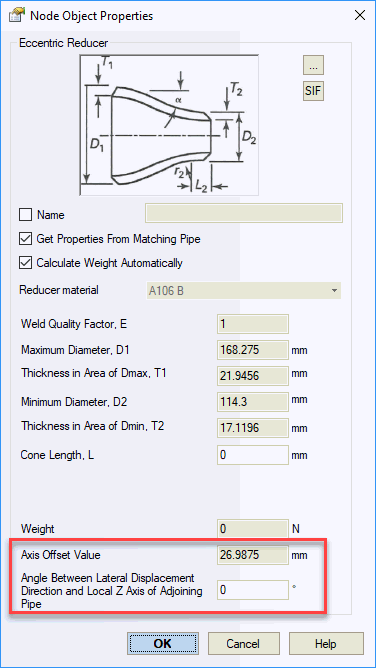
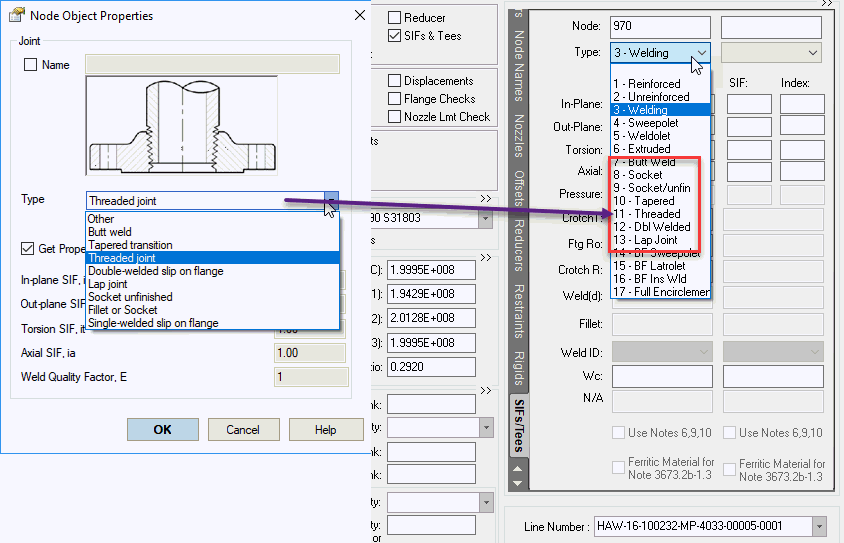
Valve is a node object. Not pipe. You can delete it and geometry will not be changed. Modeled as rigid element with specified weight.

Rigid element is a "special" pipe object

It is special object used for modelling ballasting on underwater buried pipelines.
Flange pair modeled as rigid element. Leakage check can be done.
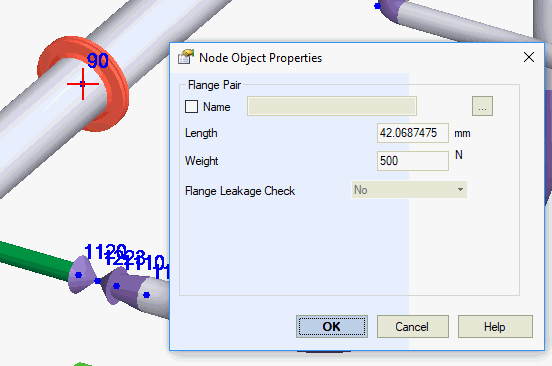
START-PROF has several "standard" supports that is most often used. And "Custom Restraint" for everything else. Also START-PROF allows to specify allowable loads. If support load is greater than allowable the table cell will be colored by red and warning message appear in errors and warnings window.



START-PROF Guide support consist of vertical and horizontal restraints. Allow to set the gap and friction factor. Allows to define allowable loads
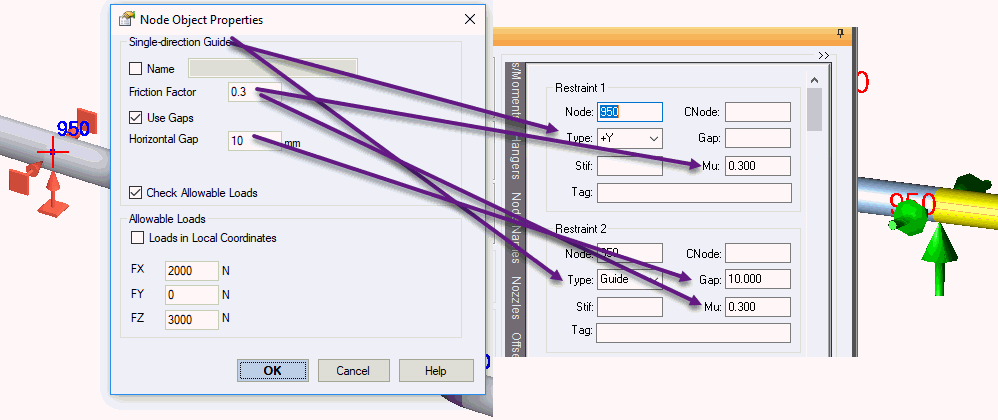
Hanger table for spring selection is defined in project settings. START-PROF has variable spring database that contain springs from several manufacturers. The database will be expanded in the future.
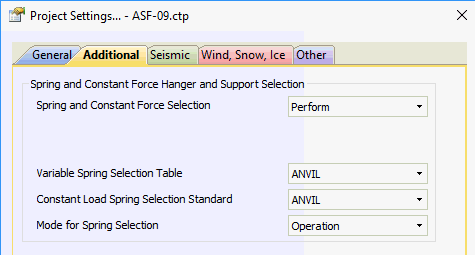
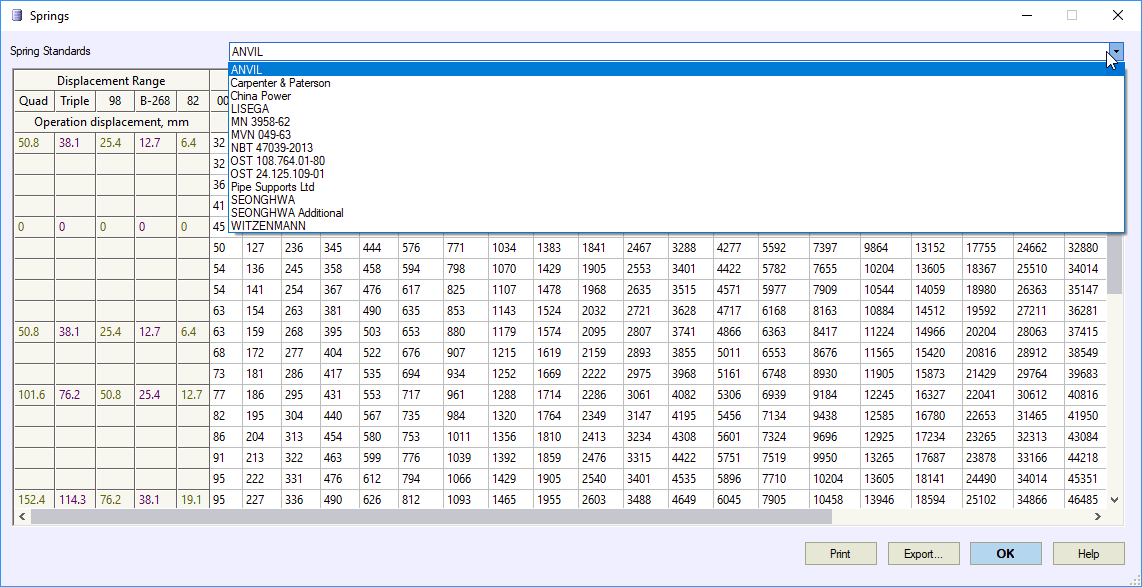
START-PROF has two types of springs: Hangers and Supports. Rod length can be specified for hangers, and friction factor for supports. If operation load or stiffness will be left blank, software will select it automatically. During selection software suggests when spring should be replaced by constant spring. After replacement it will be selected automatically. But designer should take a decision, because constant springs are more expensive.
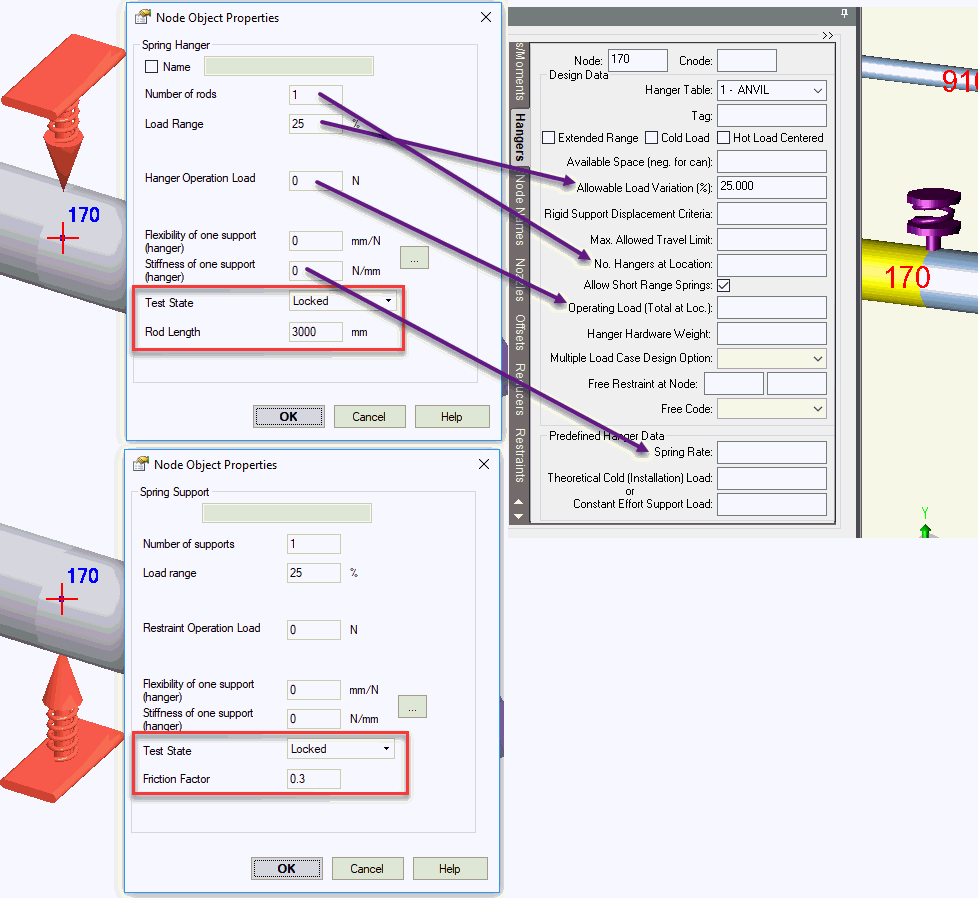
START-PROF has constant spring database and allows to select correct springs automatically. If vertical force left blank, then it will be selected
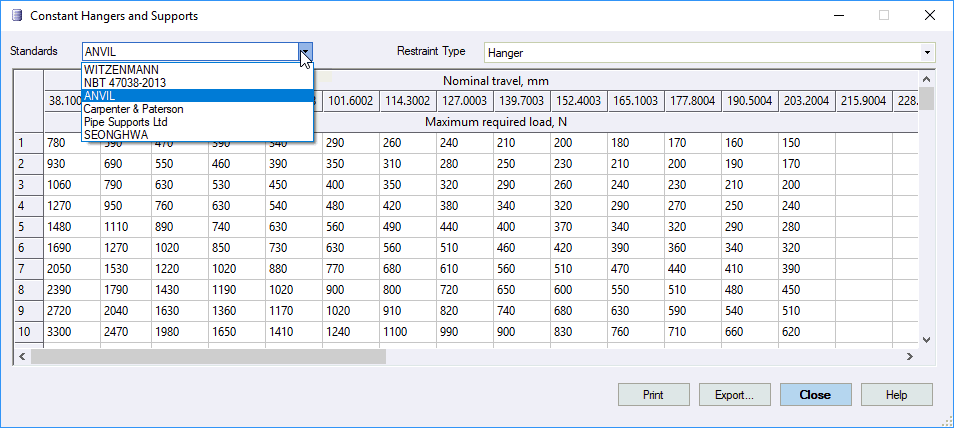
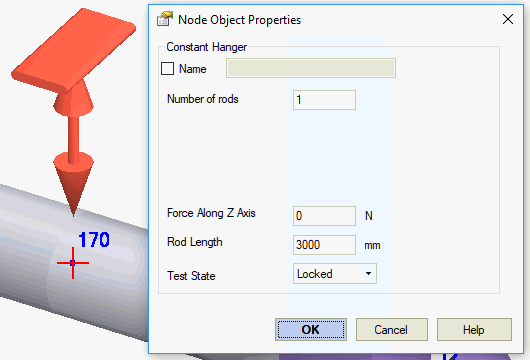
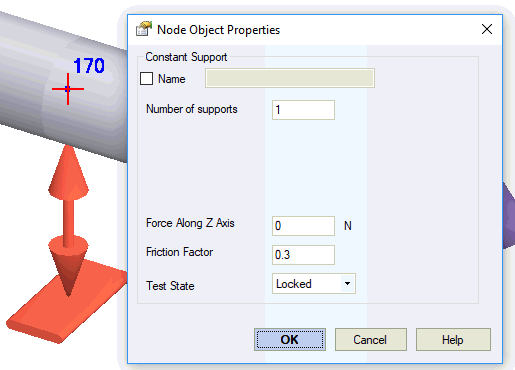
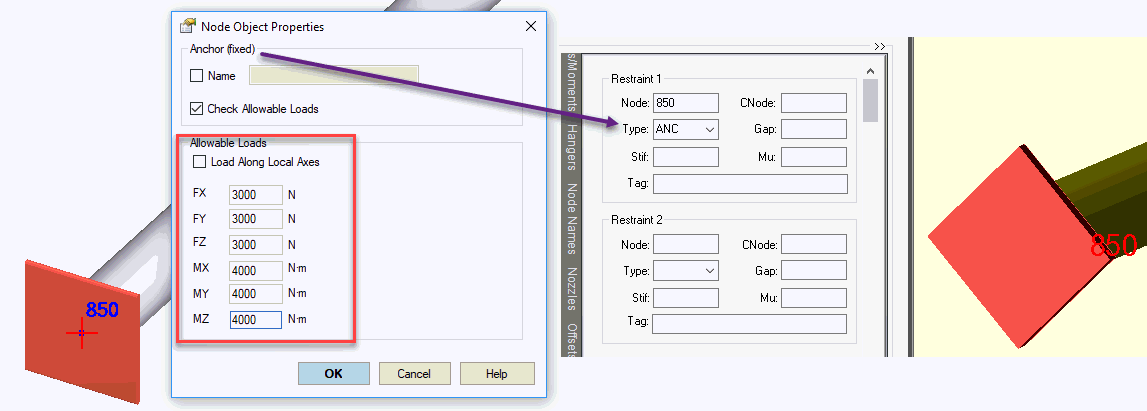
Moment Free Anchor used to cut model in separate parts and for some other purposes. Allows to define allowable loads
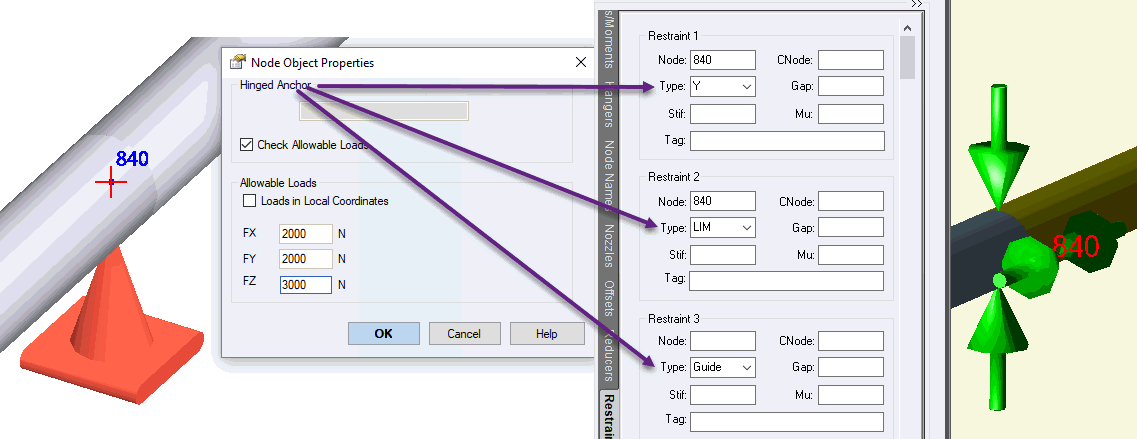
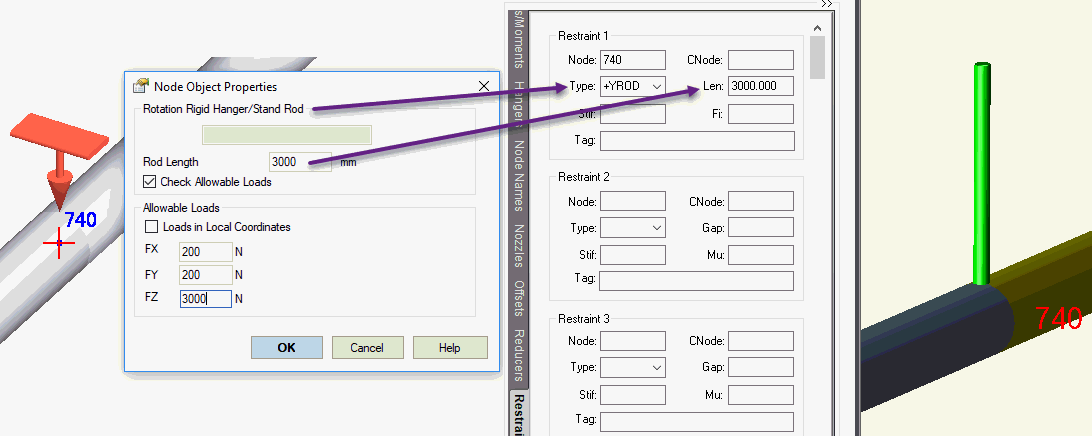
Custom restraint allows you to create any type of restraint
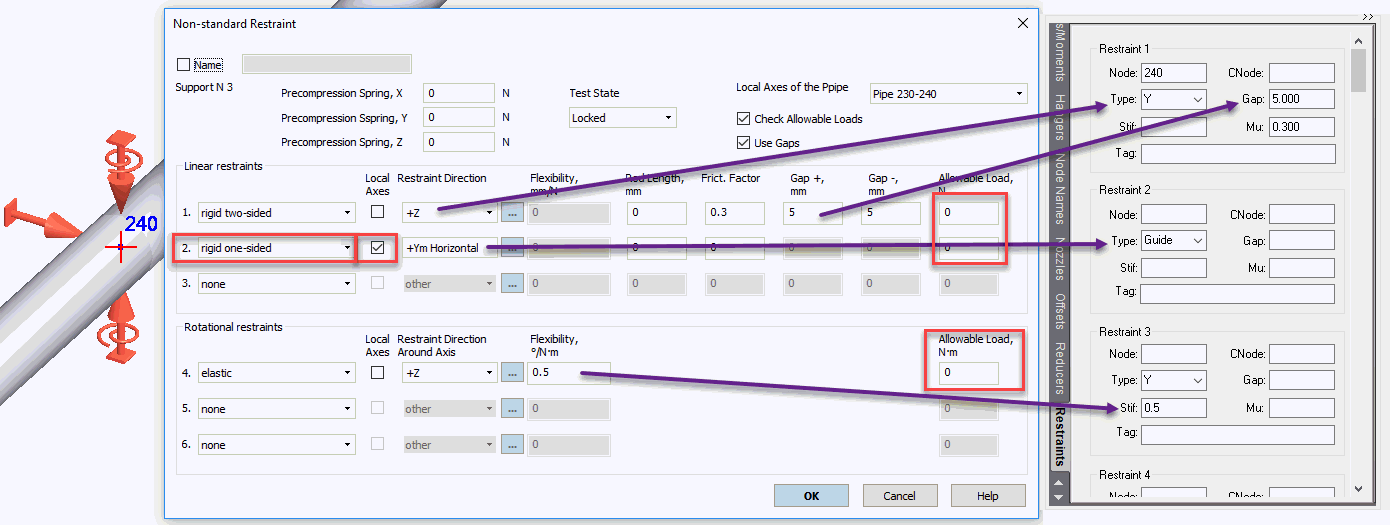
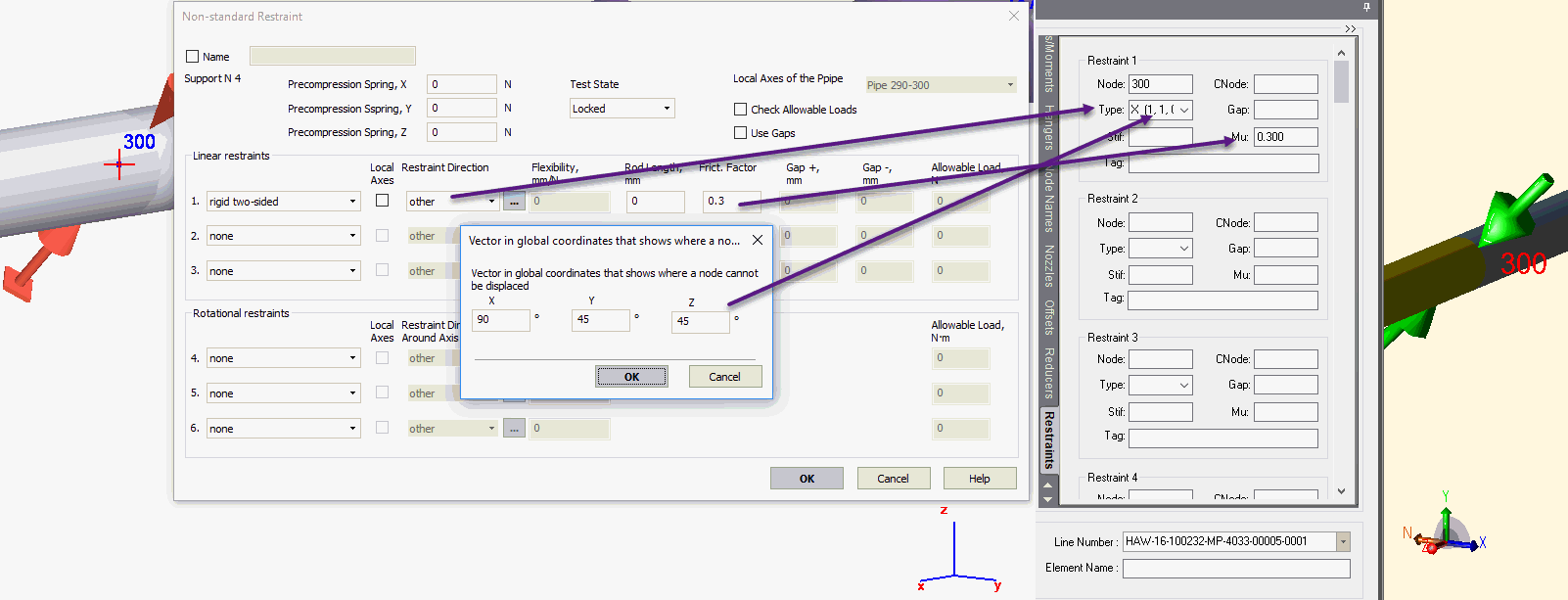
START-PROF has slightly different ideology based on Operation Mode Editor ideology.
Additional weight loads are used for all operation modes cases including seismic.
Non-weight loads used for all operation modes excluding seismic.
Additional force-based loads used only in specified load cases, that is usually occasional (relief valve, waterhammer, slug flow etc.).
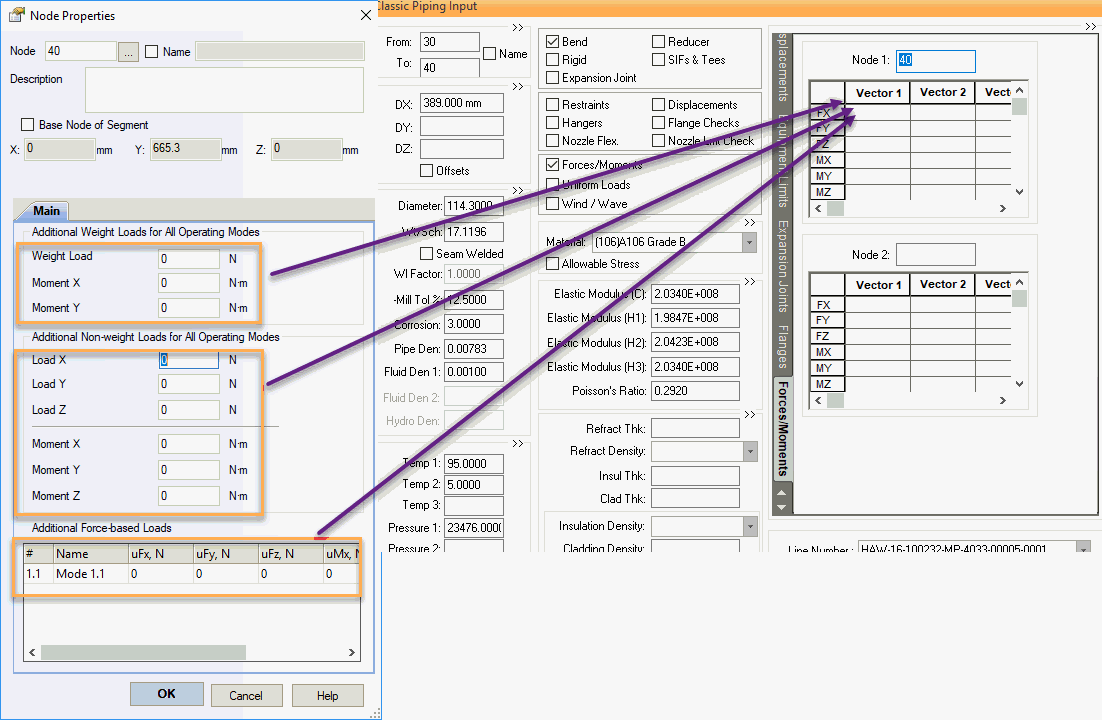
Uniform loads has the same ideology as node loads, see above. Loads in G's are automatically calculated in START-PROF by static seismic load generator.
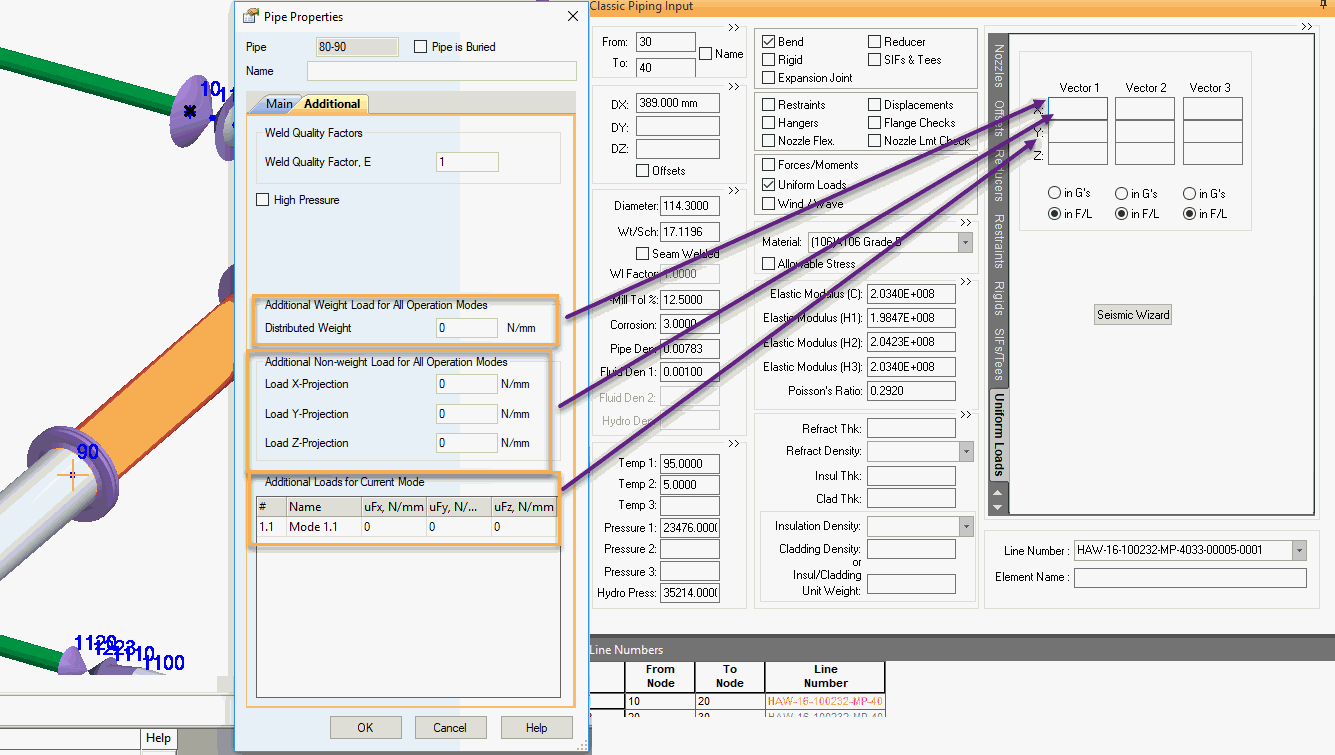
In START-PROF no need to create CNODE and connect the node with displacements. Just add the fixed anchor and add the "deformation" into it.
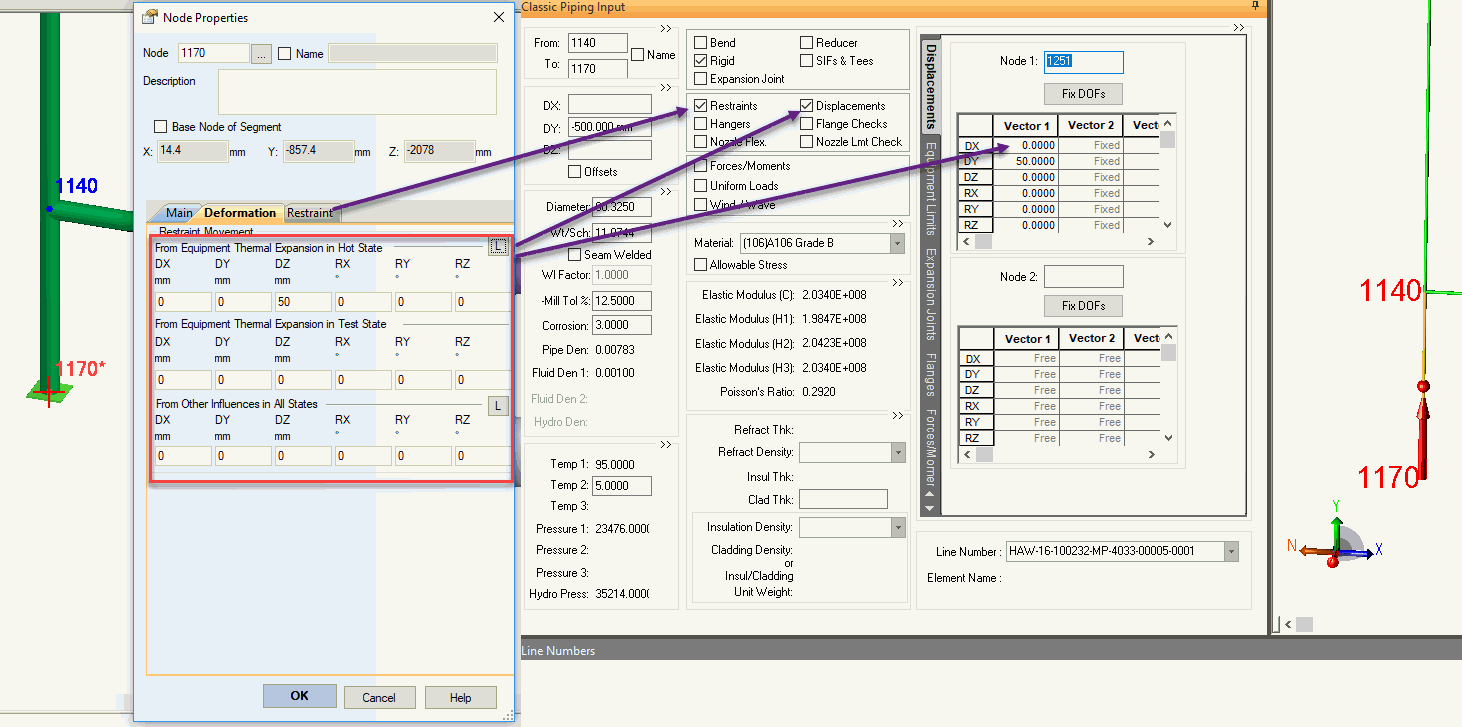
Complex expansion joint models can be created in START-PROF, but it is not needed. START-PROF has standard expansion joint models. Allowable axial, rotation and lateral deformation is checked by software automatically. Expansion joint report is shown below:

START-PROF has expansion joint database
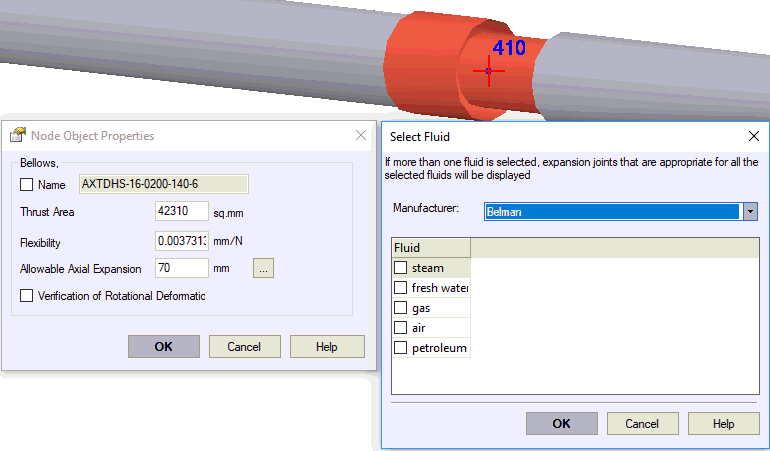
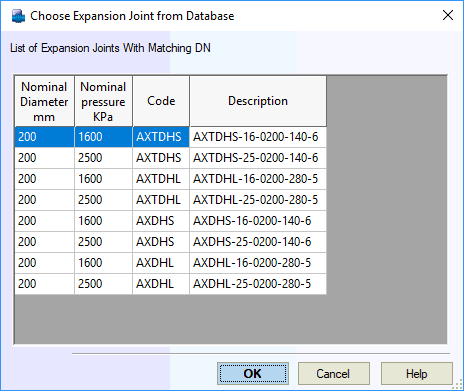
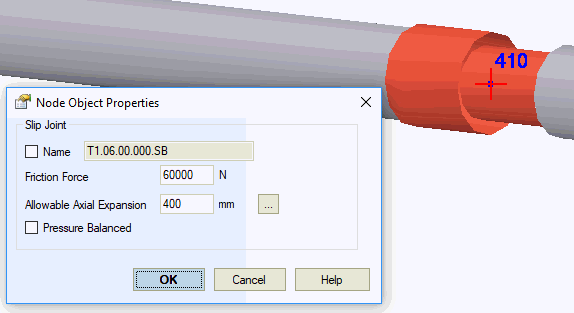
This type of expansion joint is widely used in buried district heating networks to perform cold spring effect.
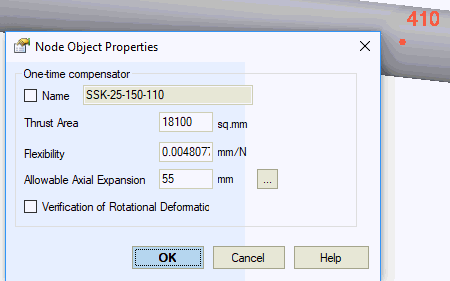
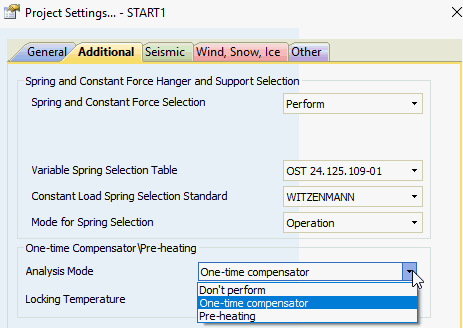
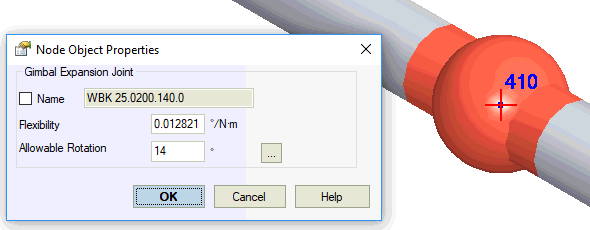
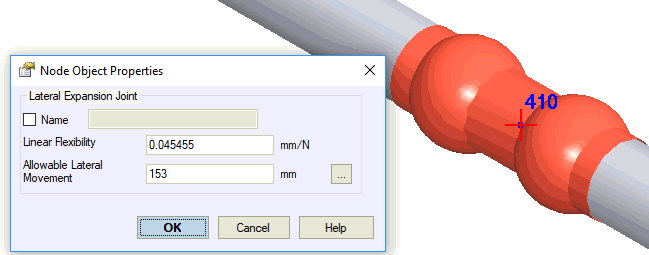
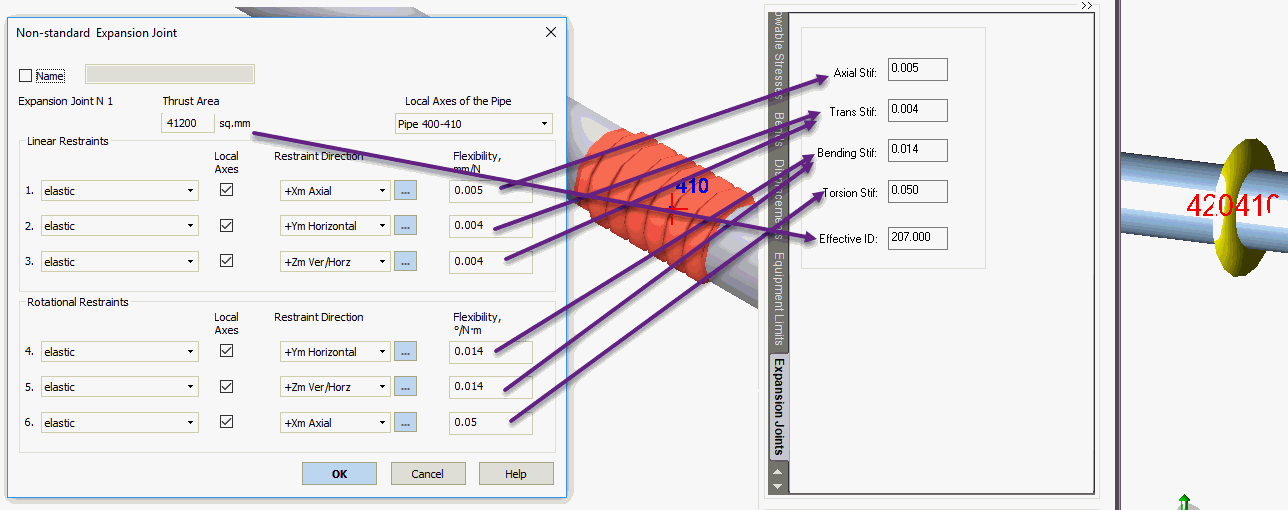
Wind, Snow, Ice loads can be generated automatically. No Snow and Ice loads generator in Caesar II
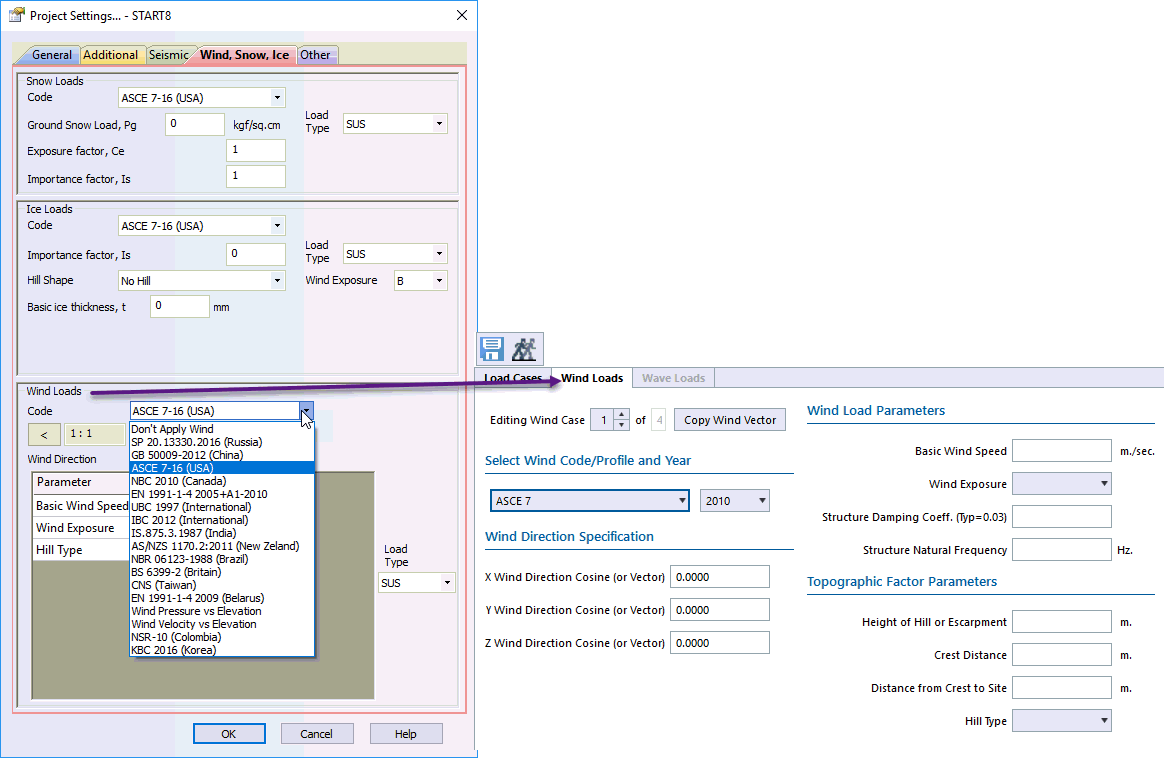
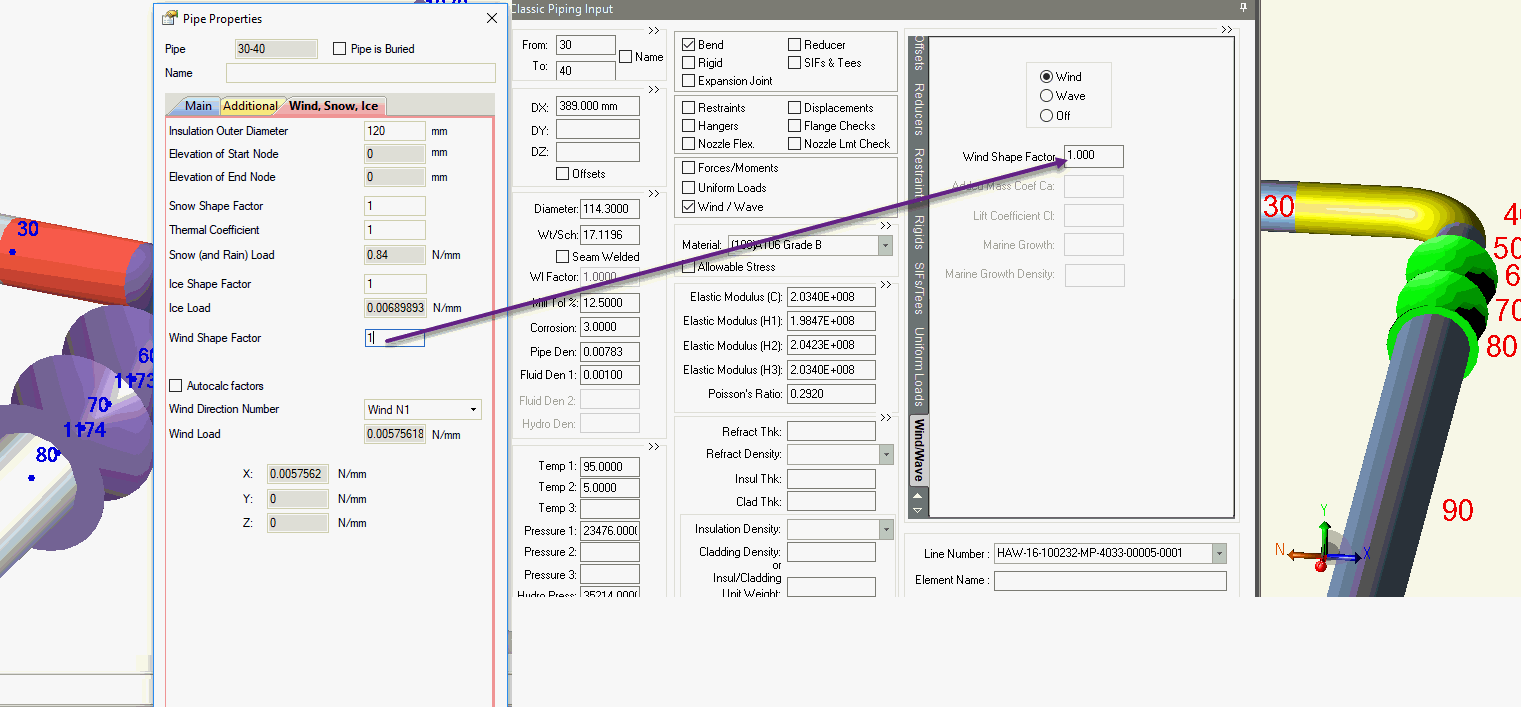
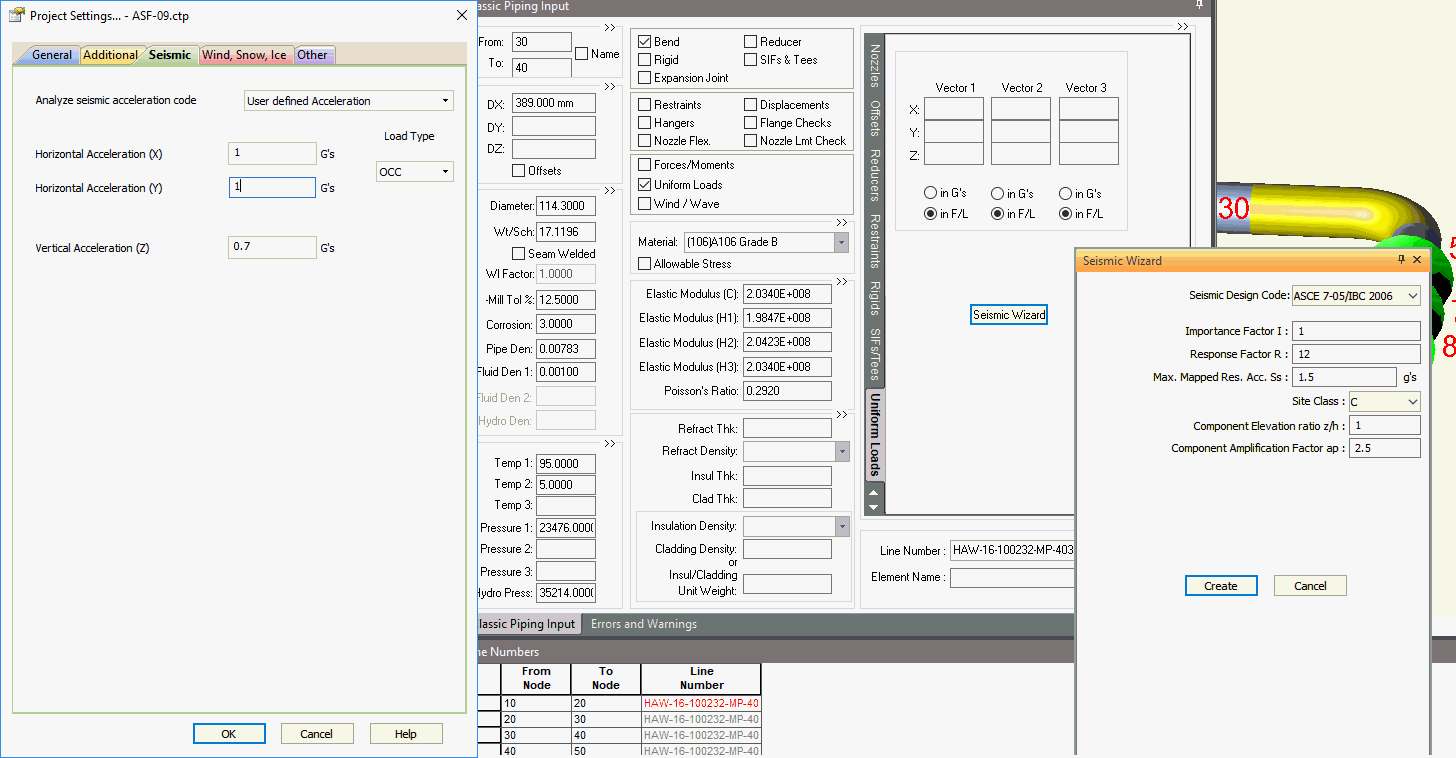
There's no wave loads in START-PROF yet :( But we are already working on it ;)
Another popular question "how to specify several pressures and temperatures and create load cases" and "How many pressures and temperatures we can specify?".
Yes, it is possible to specify several pressures, temperatures, and the number is unlimited. But START-PROF is smart enough to create load cases automatically. You don't need to do it manually. Please refer to this link. And also refer to this article.
START-PROF has high-level Operation Mode Editor, based on templates. That allows do the same things as Load Case Editor, but in more fast and easy to understand manner.
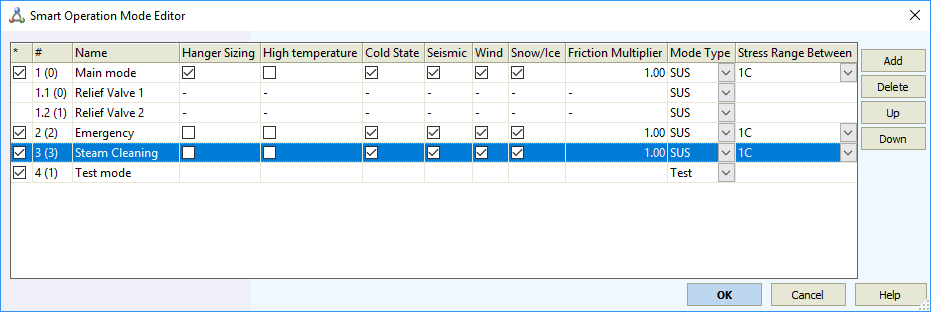
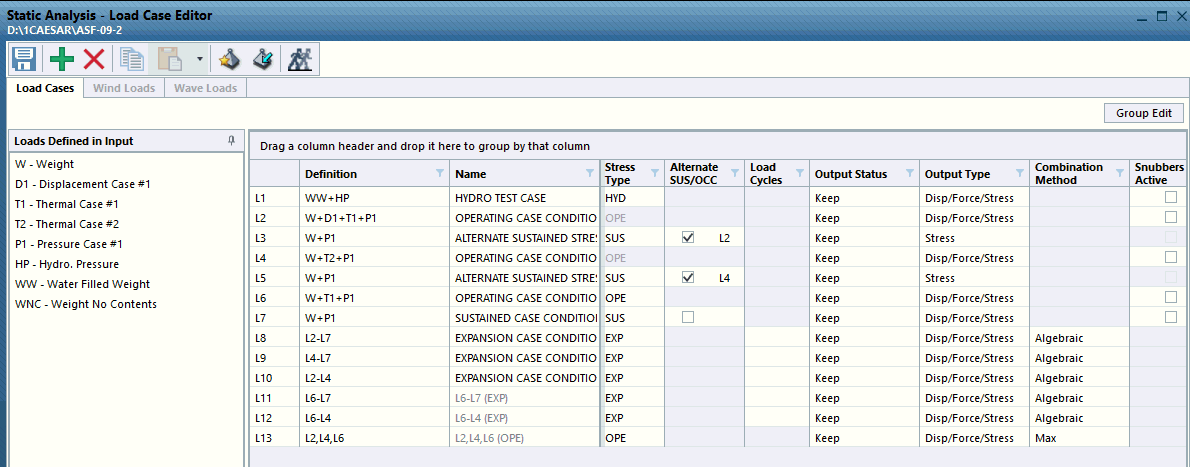
Very popular question "Is there an equivalent method or command for CNODE support as there is in CAESAR II software?"
You don't need CNODE in START-PROF. CNODE in CAESAR is used to:
Model nozzle connection to a vessel that is modeled using pipe or rigid elements. In START-PROF you can do the same without CNODE. Please refer this link
Model Fixed Anchor or another support with displacements (movements). In START-PROF you can do the same thing easier. CNODE is not needed. Just specify displacements in Fixed Anchor or any other support. START-PROF will model movements of this support. Please refer this link
Model connection of the two pipes to each other or jacketed piping. It can be done in START-PROF without CNODE: Please refer Jacketed Pipe, Pipe to Pipe
Also popular question "Is it possible to use two codes in one stress job for example ASME B31.1 and ASME B31.3?"
No, because load cases and load safety factors are different in each code. Load cases are generate automatically, depending on selected code and conditions, remember? But if you need to analyze first part of the piping model using one code and another part by another code, they you need just to create 2 project files of full model. In one file select first code, in other file select second code. And run both models. It's easy.
Of course, the load cases will be different depending on code. For example ASME B31.3 code will have alternative sustained load cases, but ASME B31.1 will not. START-PROF is smart software.
START-PROF always consider Bourdon Effect (Translation & Rotation). Occasional load factor is taken according to selected code and chosen in operation mode editor. SIF multiplier for sustained stress is always according to the selected code.
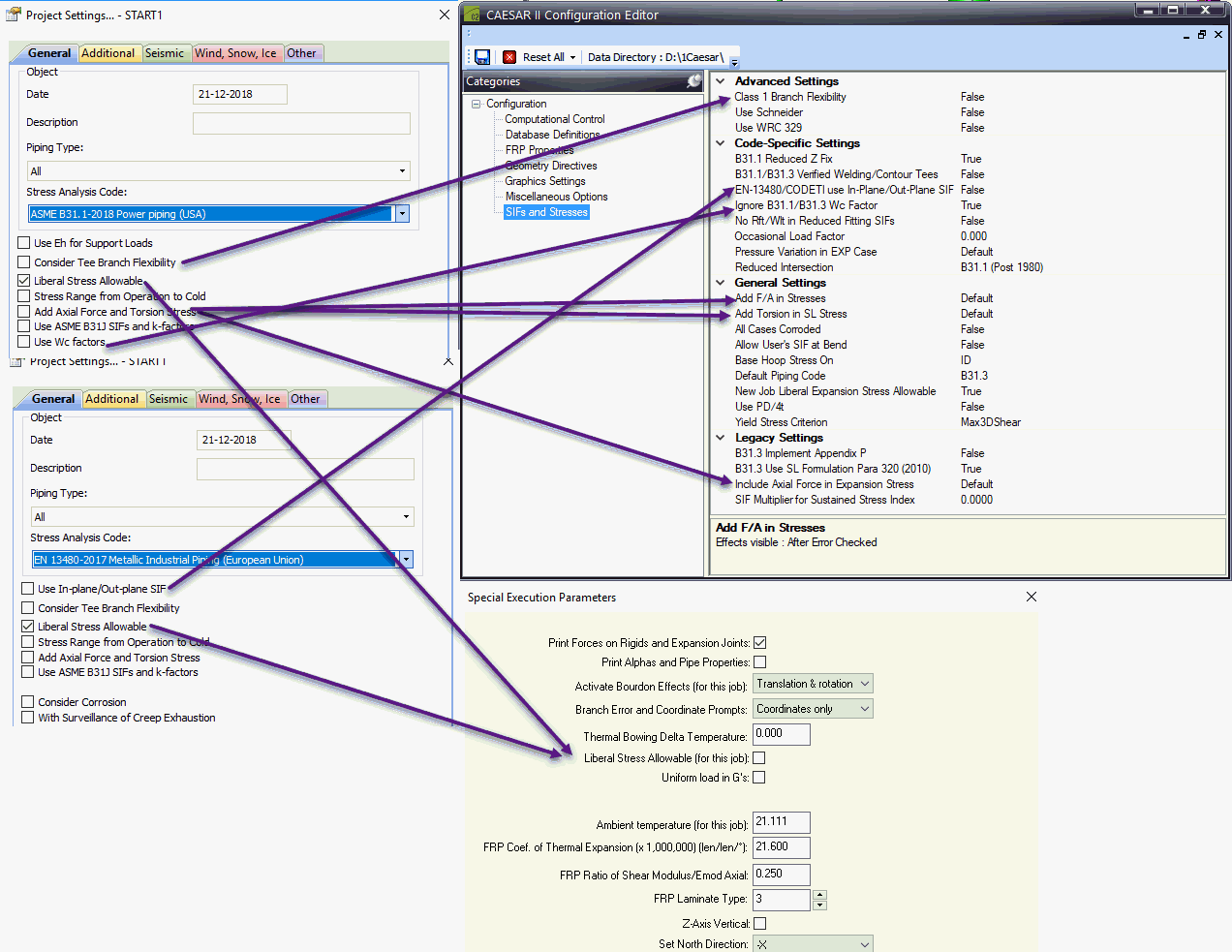
See ASME B31.3 302.3.5 equation (1с). If selected, then maximum value of stress range factor f can be 1.2 for materials with enabled option "Maximum f=1.2" in material database, otherwise maximum value always f=1.0.
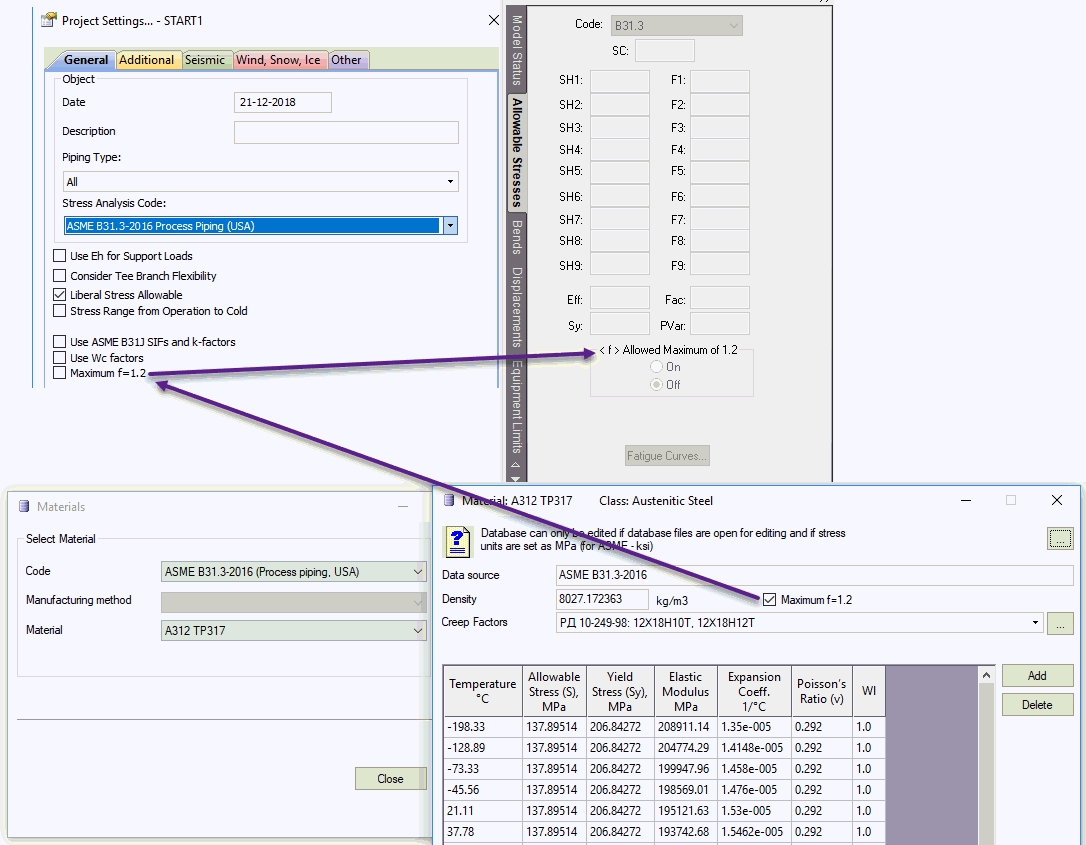
To use more accurate SIF and k-factors just turn on this switch (see below). All calculations and model modification will be done automatically on-the-fly. No need to use any additional software (B31J Essentials, FEATools).
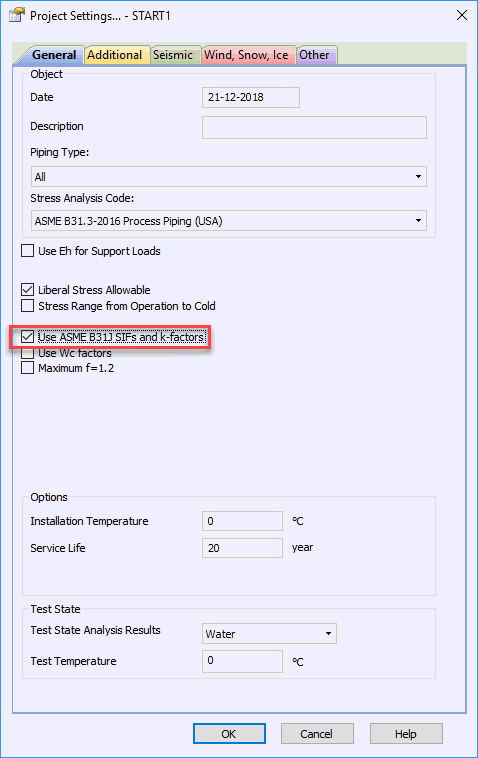
Units can be converted any time on-the-fly. Before analysis, and after analysis. No need to convert whole model.
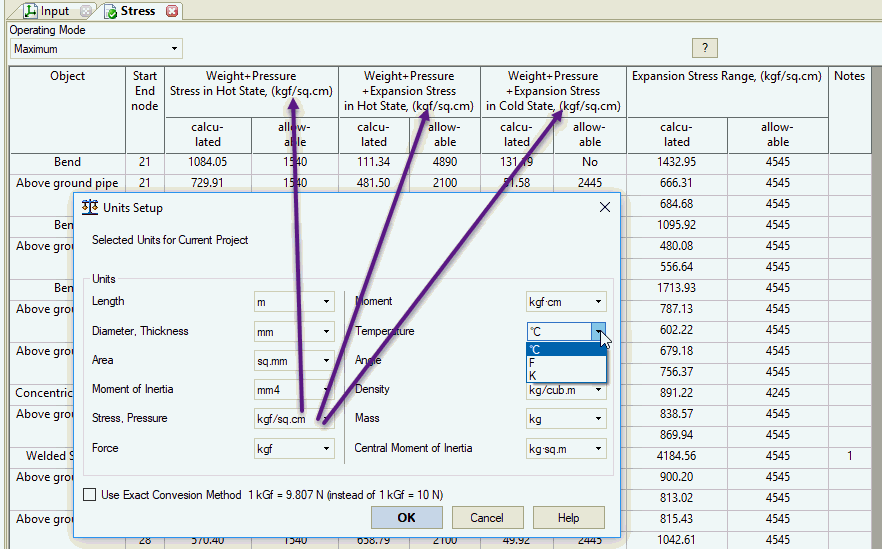
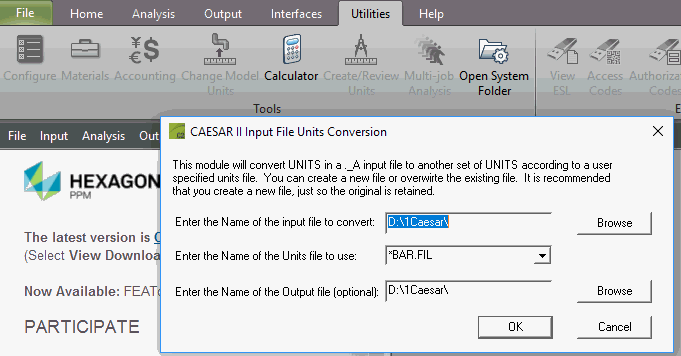
See Video about buried piping analysis with START-PROF.
There's no underground pipe modeler in START-PROF. Soil springs are added automatically each time you run analysis. You can change the model and run analysis immediately, no need to open backup copy of the model without soil springs and run underground pipe modeler again. START-PROF is very fast and easy.
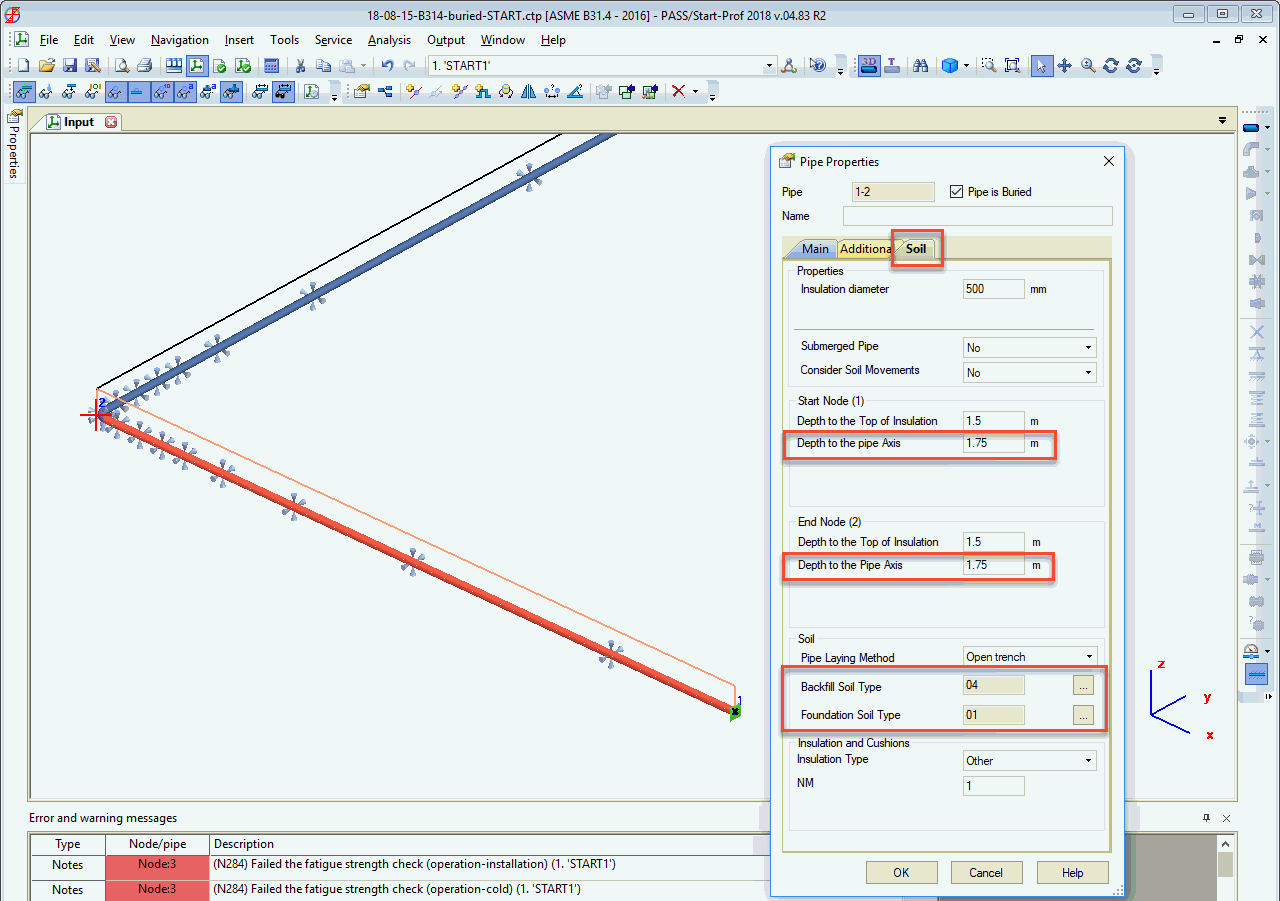
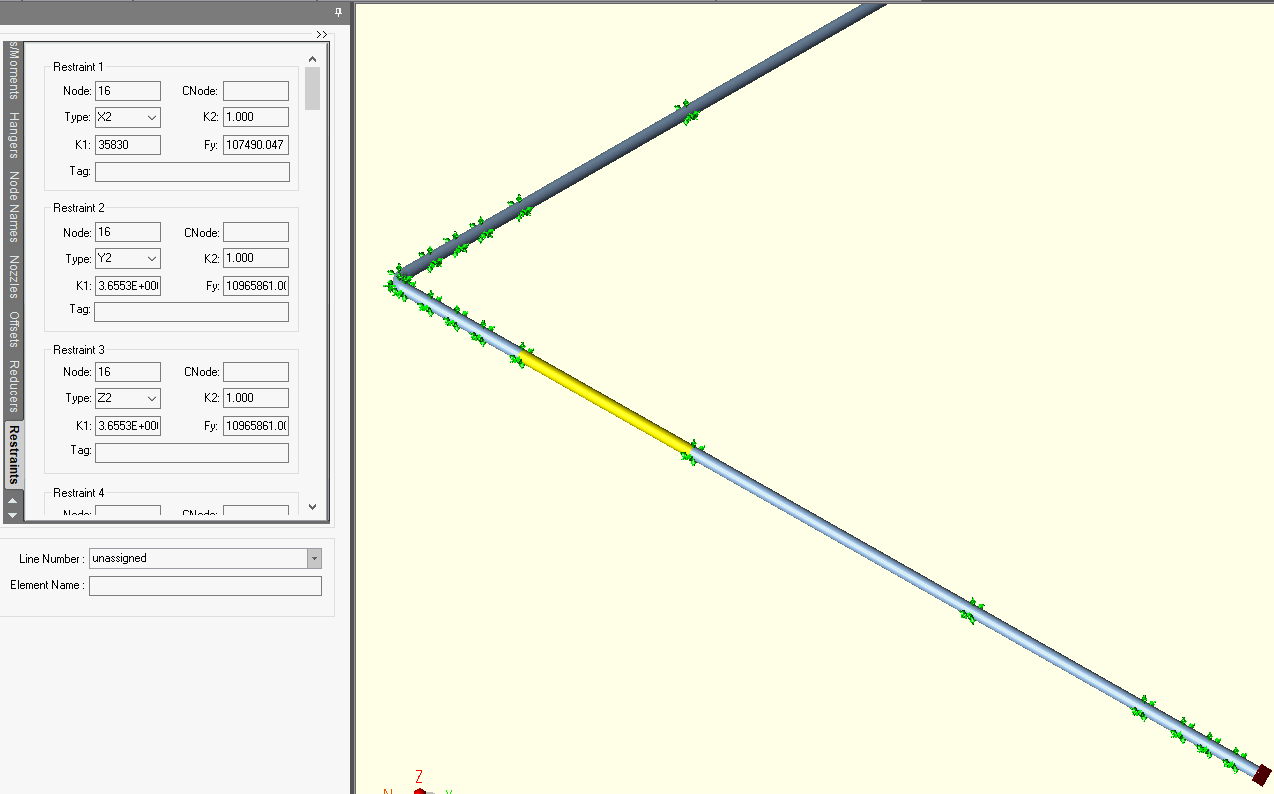
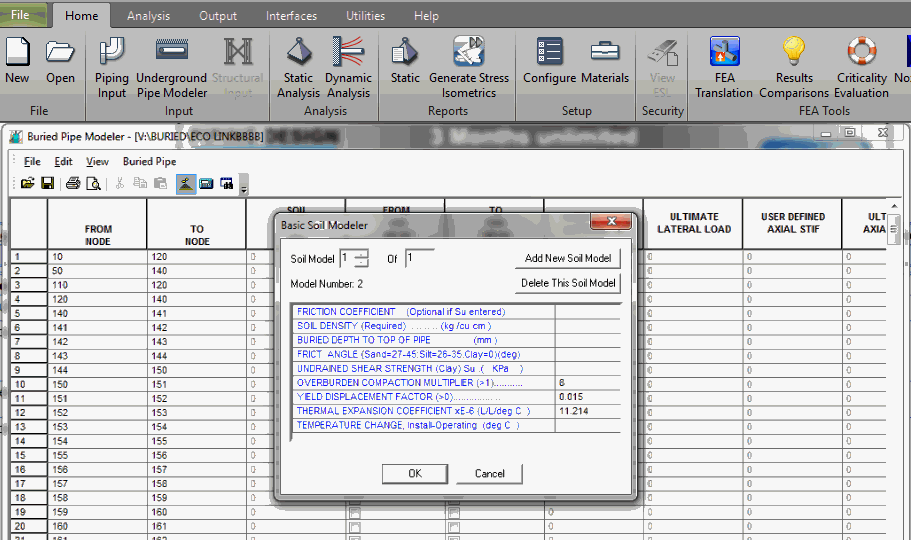
Creep Effect (stress relaxation and self cold-springing effect) is considered for high temperature piping in START-PROF. Not just for operating mode, but also for cold mode. The cold mode is the most dangerous for high temperature piping due to self cold springing effect.
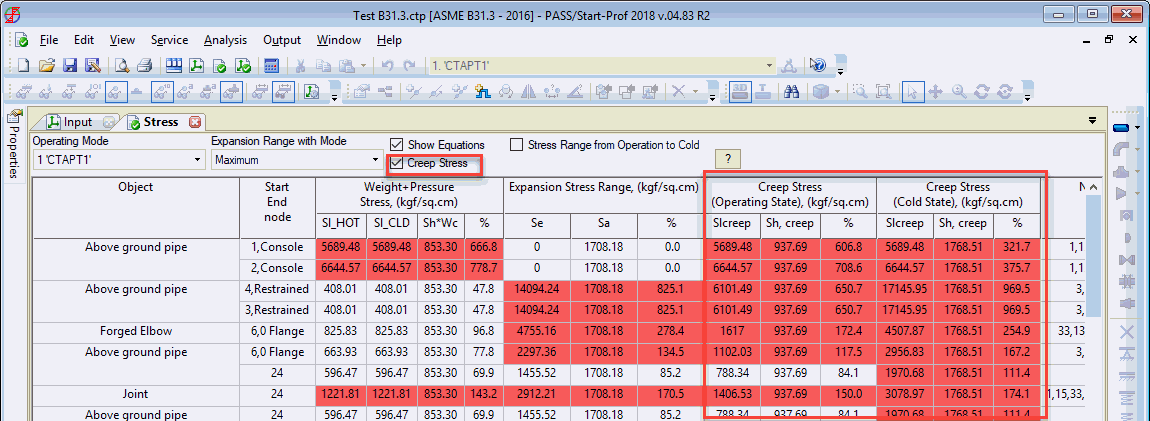

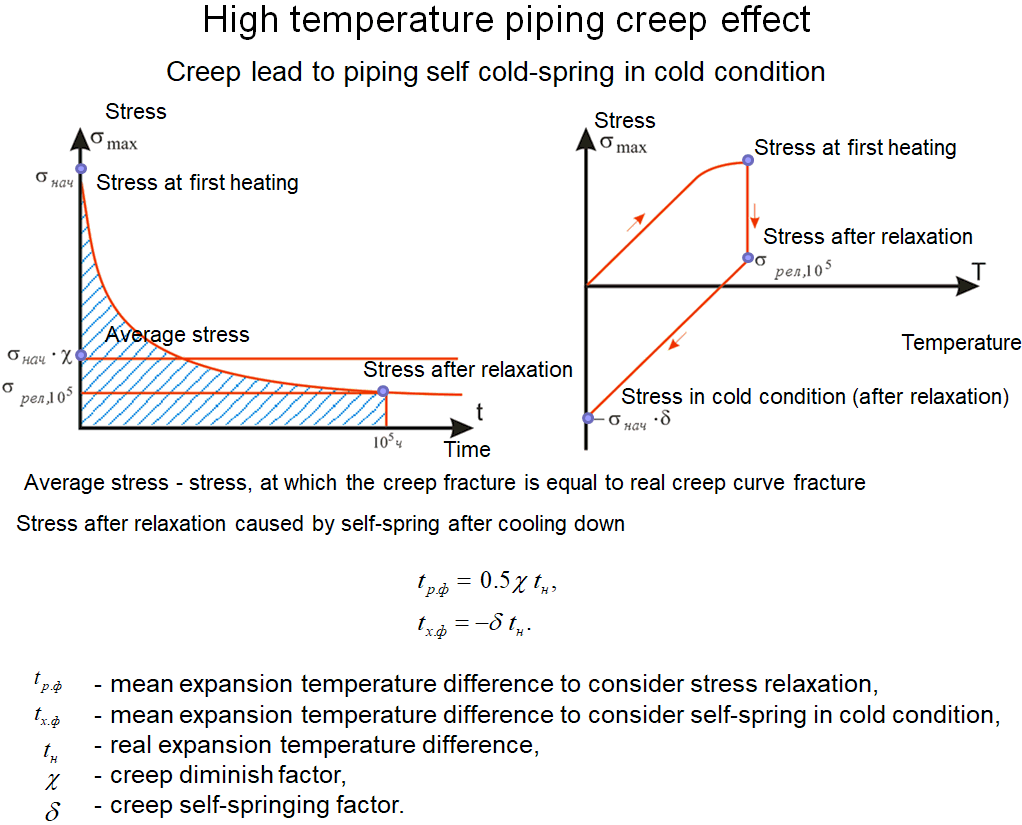
START-PROF has a special module START-ELEMENTS that allows to check wall thickness or allowable pressure for pipes, bends, tees, reducers, caps, flanges. Also before piping analysis START-PROF checks the wall thickness of all pipes and fittings to satisfy pressure requirements for all operating modes.
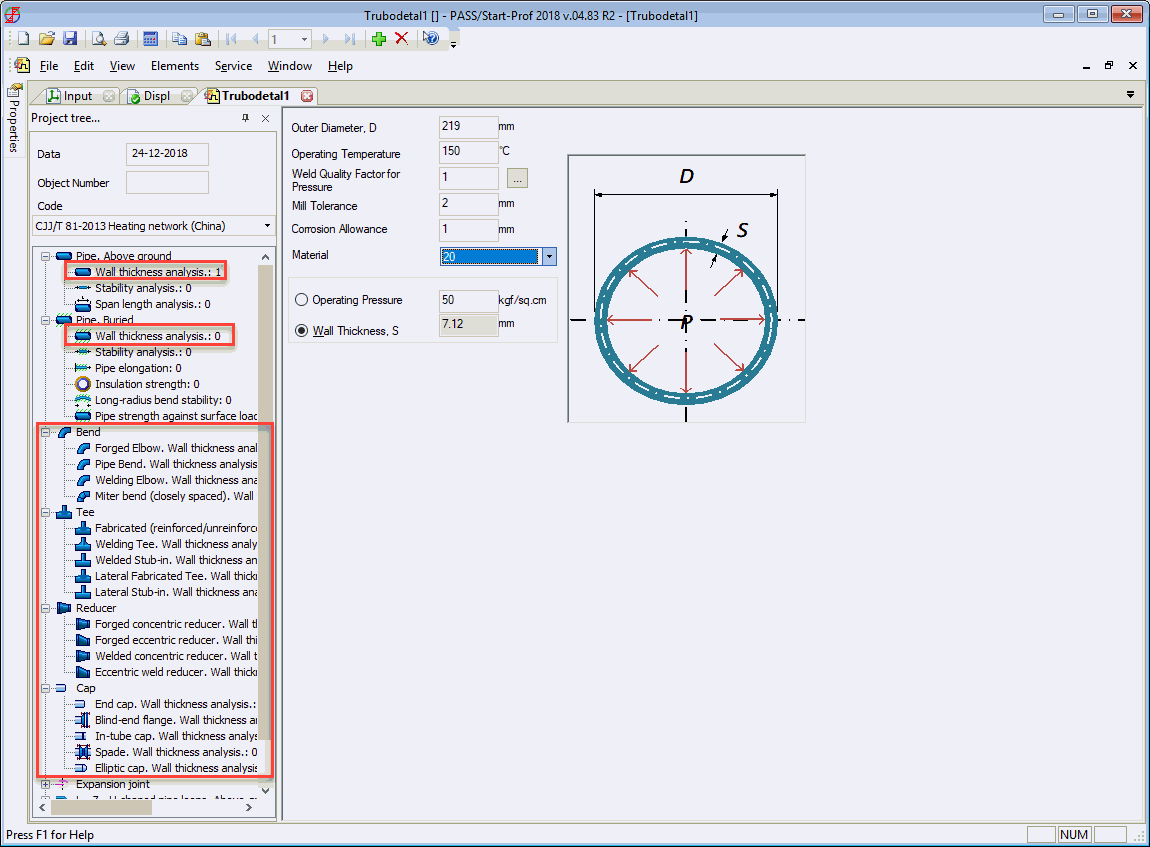
START-PROF has several functions to analyze different type of buckling: Upheaval Buckling of Buried Pipeline, Upheaval Buckling of Buried Long-radius Bend, Lateral Buckling of Above-ground Pipe, Vacuum Piping Local Wall Buckling due to external pressure and due to external pressure, axial force and moment
START-PROF has no problems with Iterative convergence. There's no settings that user must change to achieve convergence. Everything is done automatically.
You can change properties of one object or group of objects very easy. You can select part of piping and copy & paste, mirror, rotate, split it. Insert node on the pipe or bend, Move along the pipe or bendnode, delete node (just select node and click DEL button).
You can easily change properties of the multiple objects (bends, tees, pipes, etc.) using properties float window. START-PROF has all needed functions to work with independent piping segments.
Analysis result reports are smart and interactive: Code Stress Report, Spring Selection Report, Expansion Joint Report, Flange Leakage Report, Insulation Stress Report, Internal Forces, Support Loads Report, Local Wall Buckling Report, Node Displacements Report. All reports can be exported into Excel, Word, txt, html.
START-PROF has a smart errors and warnings window that all engineering warnings: Pressure failure, buckling failure, support lift off, variable spring hanger variation >25%, spring hanger load greater than allowable in all operating modes, sustained or fatigue stress failure etc. Not just only stress failure.
Graphic deformation shows hot/cold and install position, deformation position is simple and easy understand by end users.
In project tree you can see the temperatures, pressures etc, color diagram, select needed group of object and change it's properties, delete, copy etc. Also in START-PROF you can see all other object properties like bends, tees, reducers, etc.
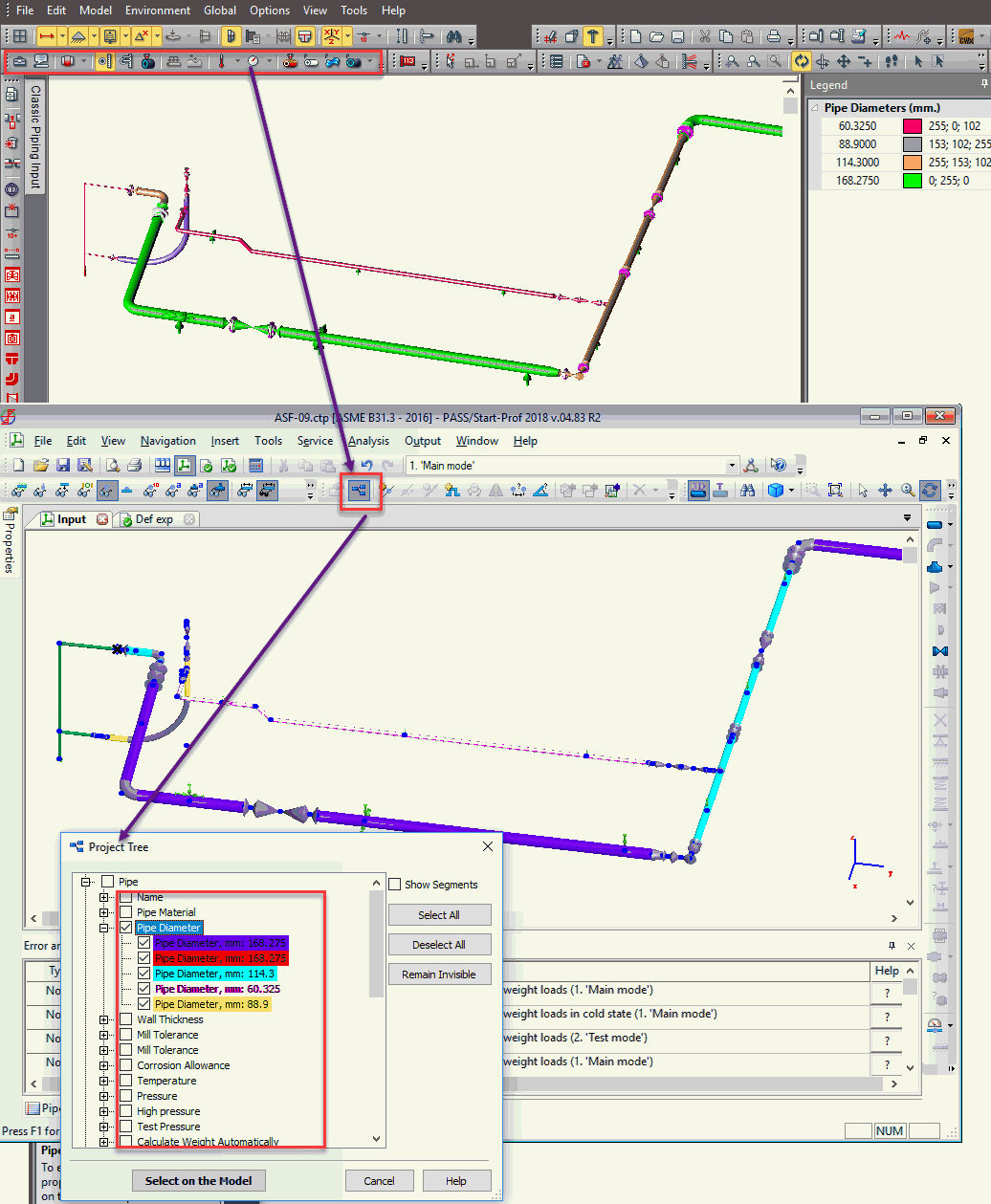
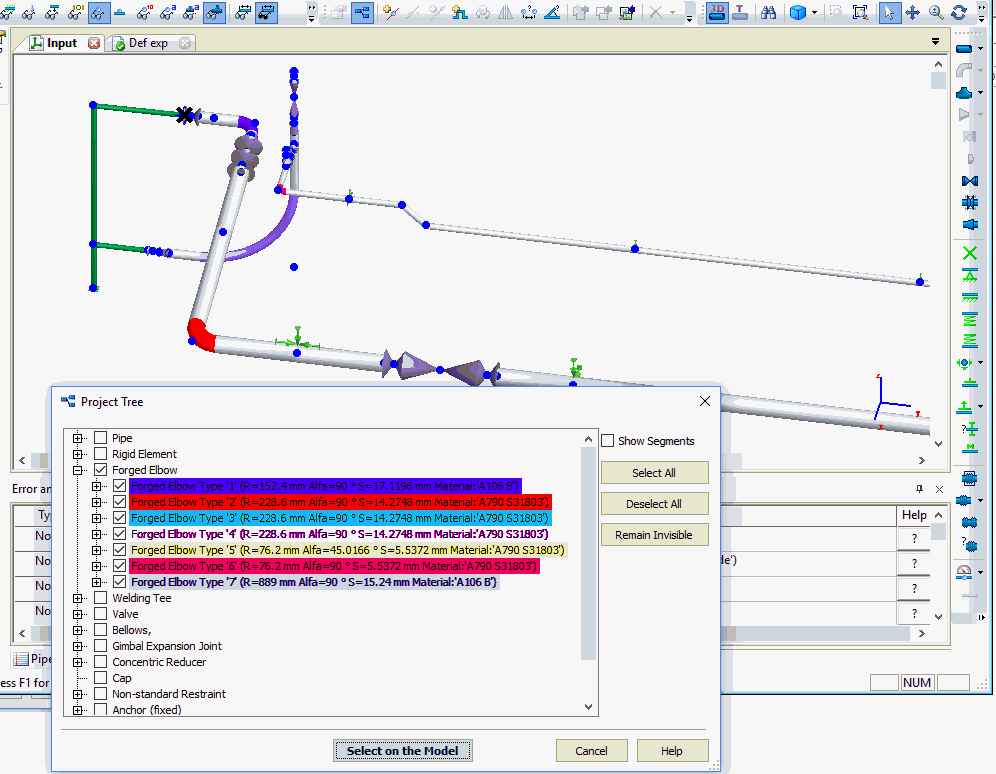
START-PROF has free PDMS and E3D interface: See Video